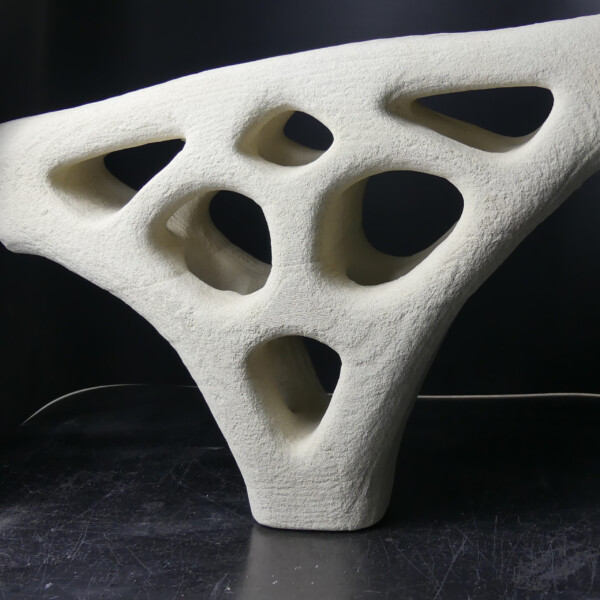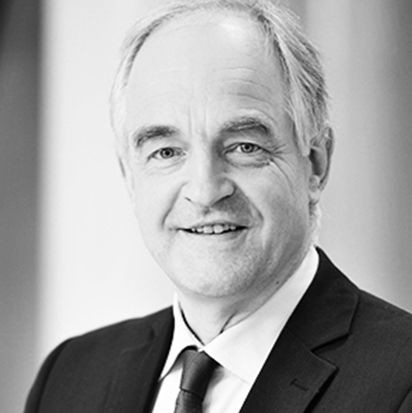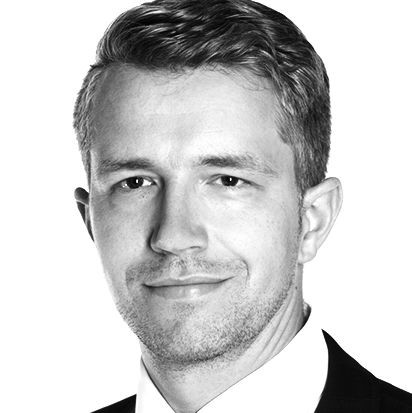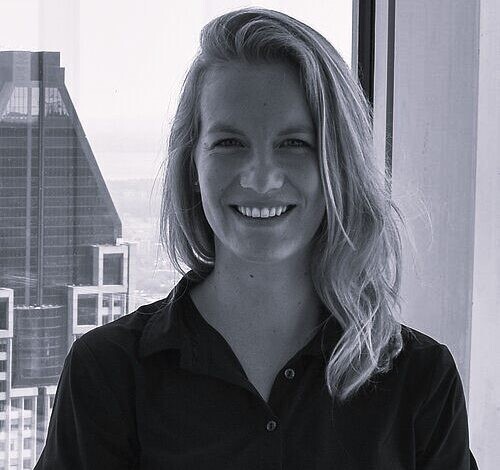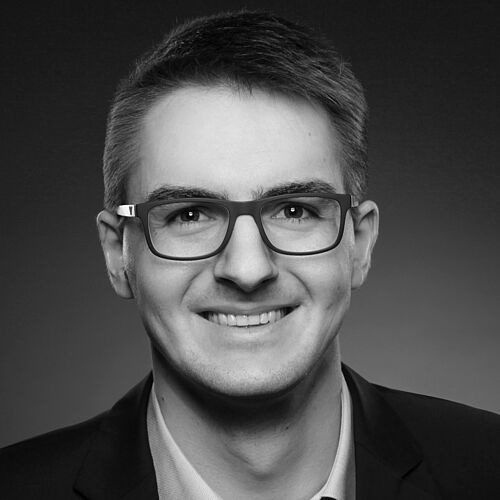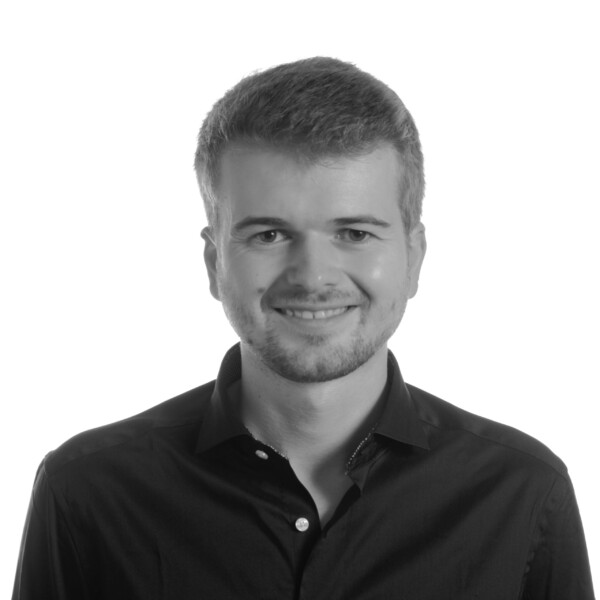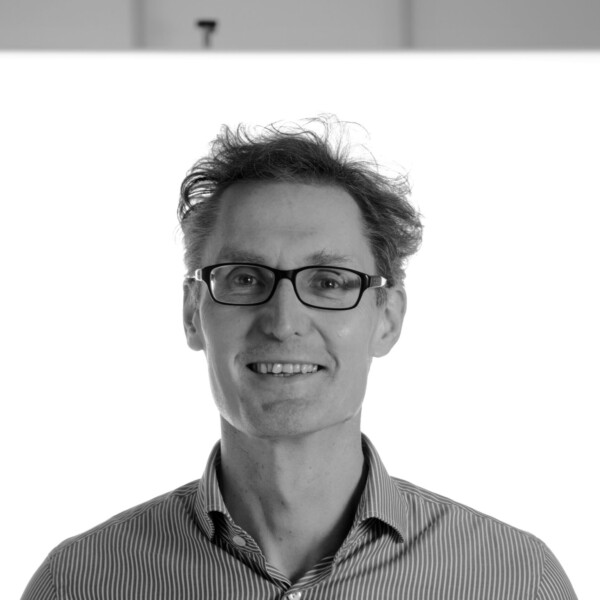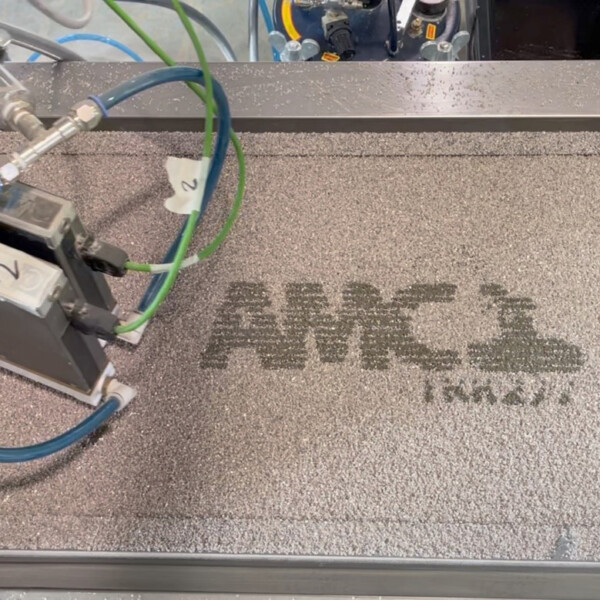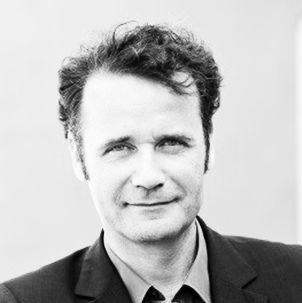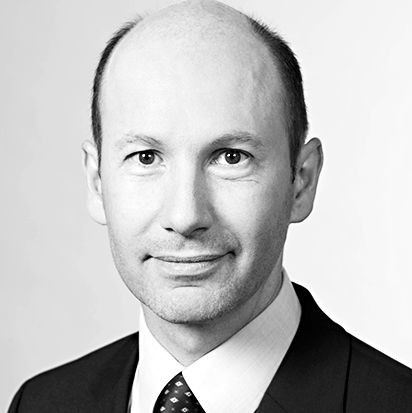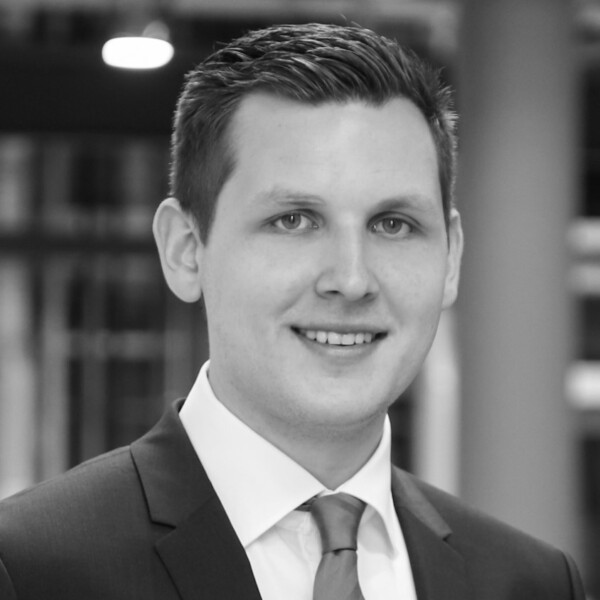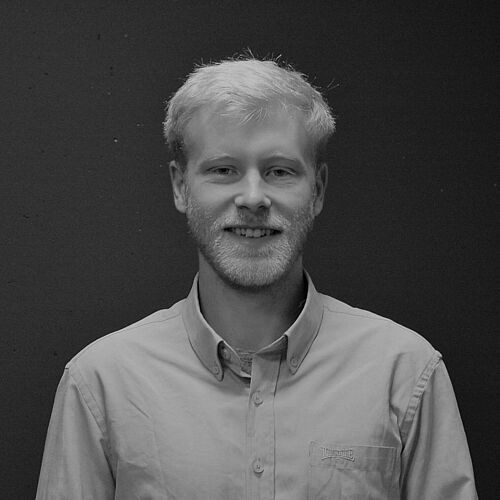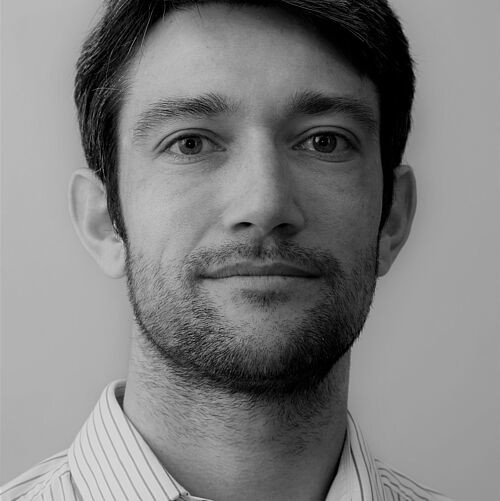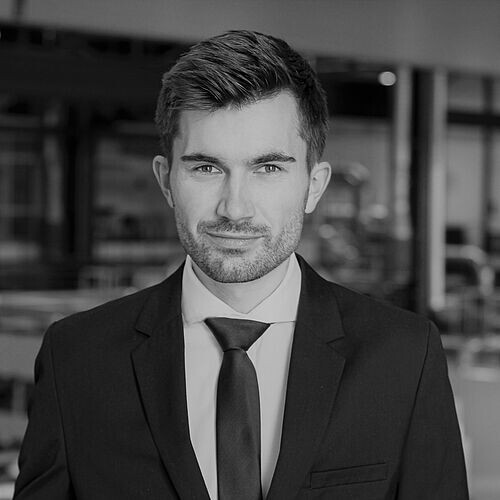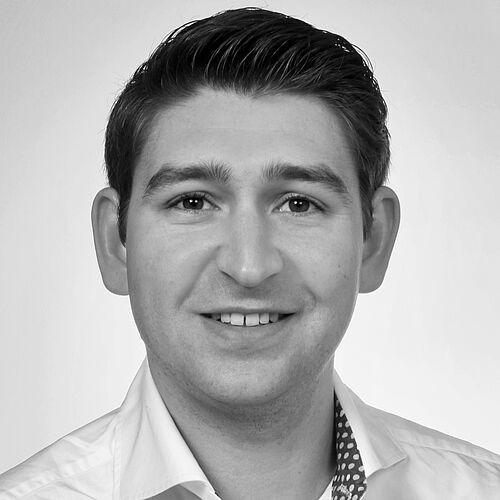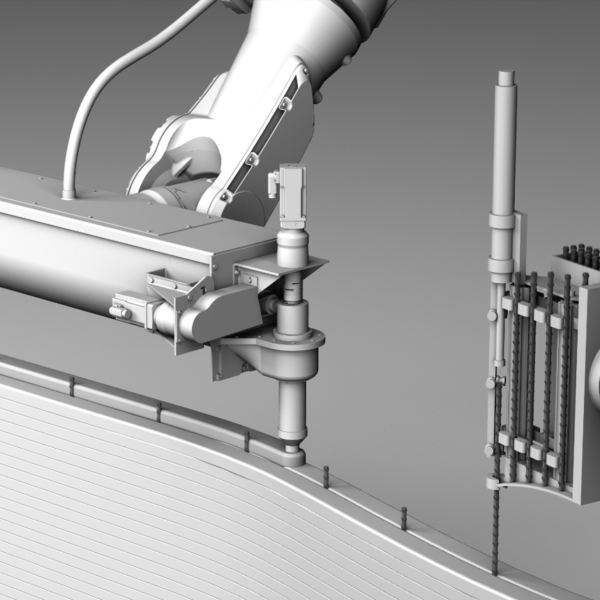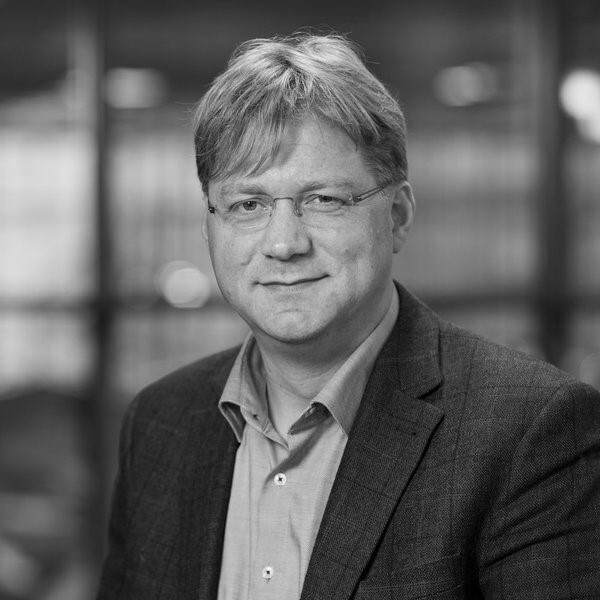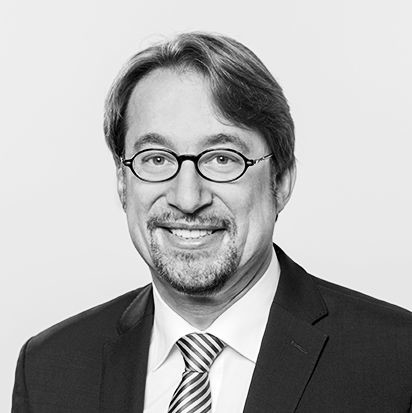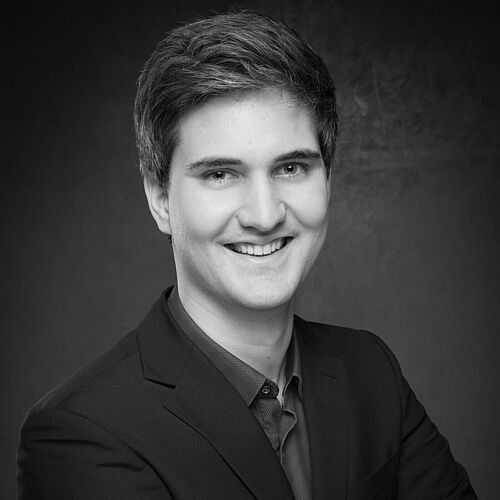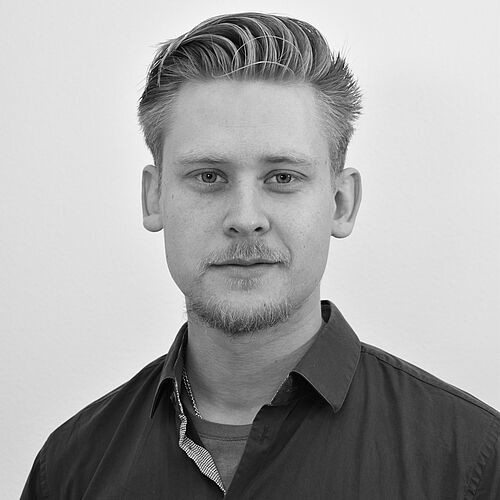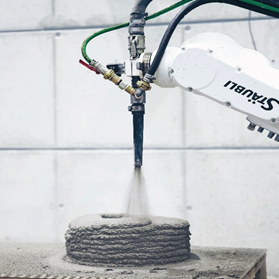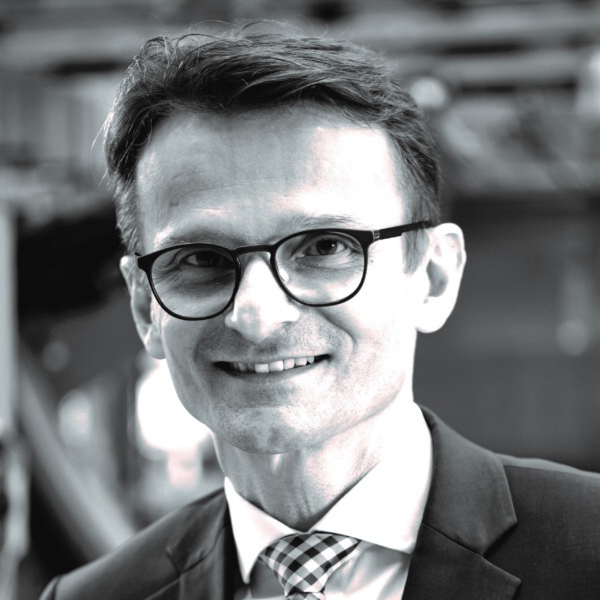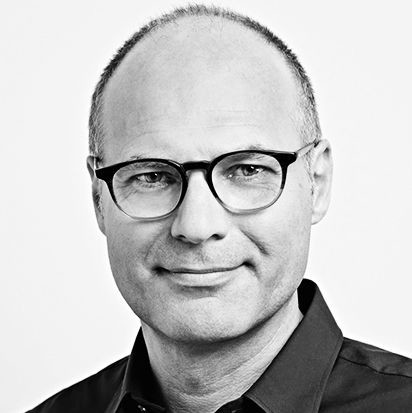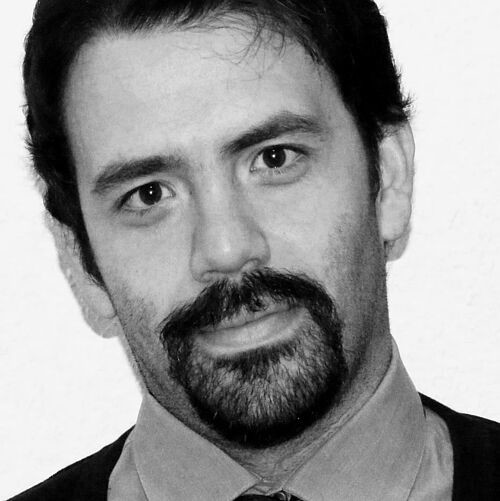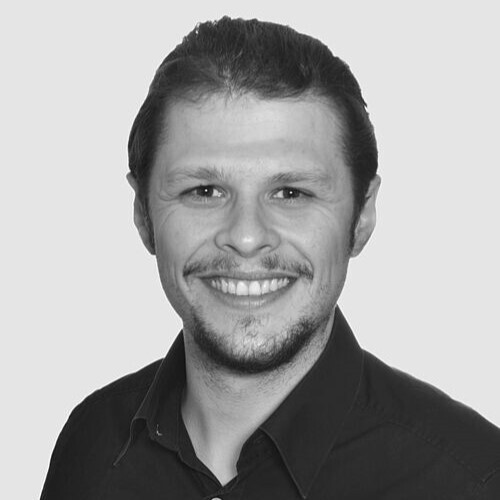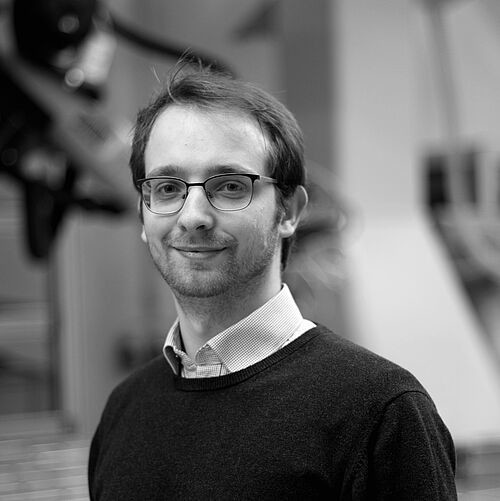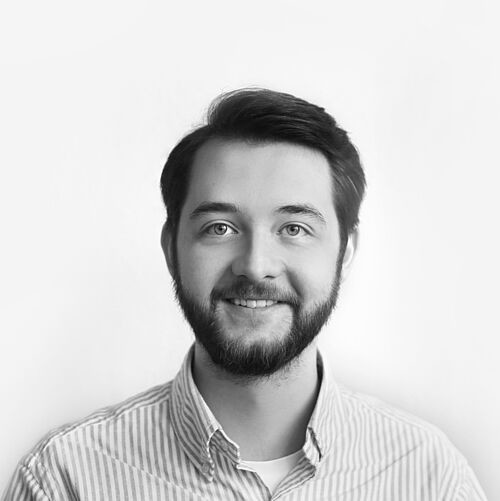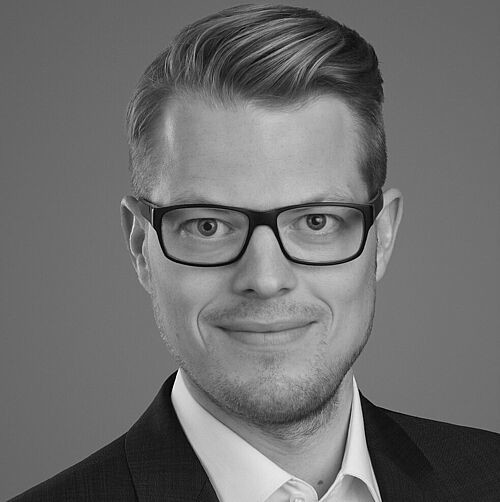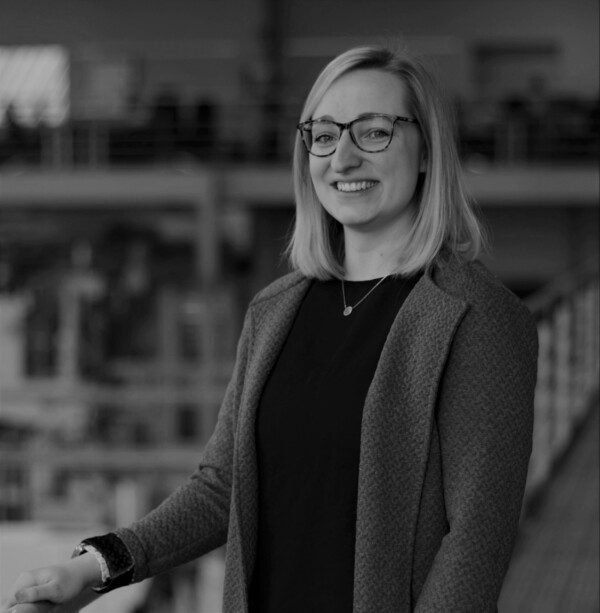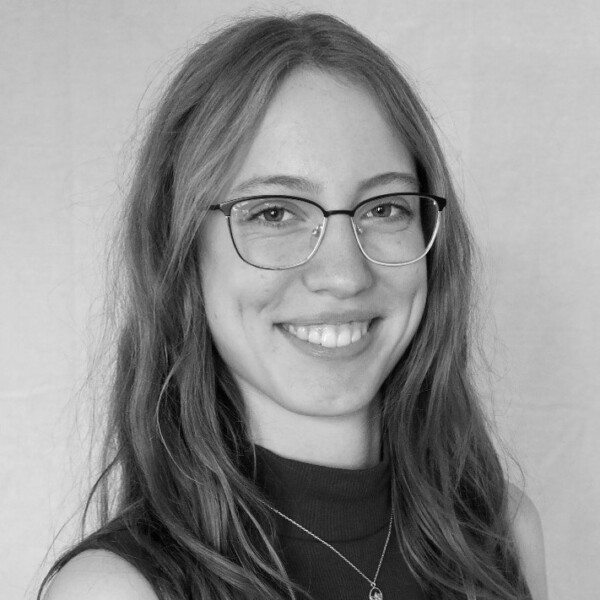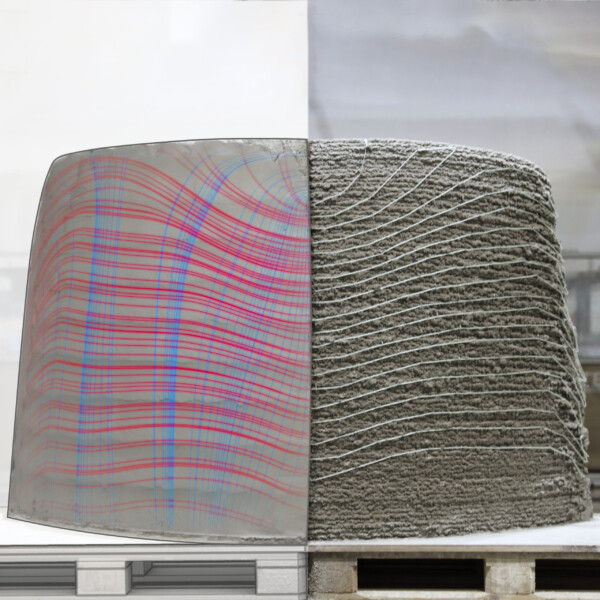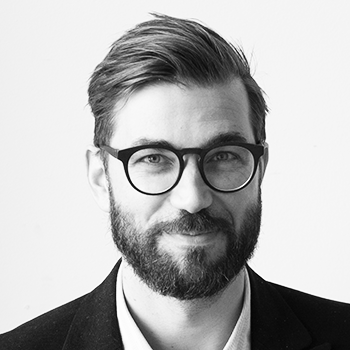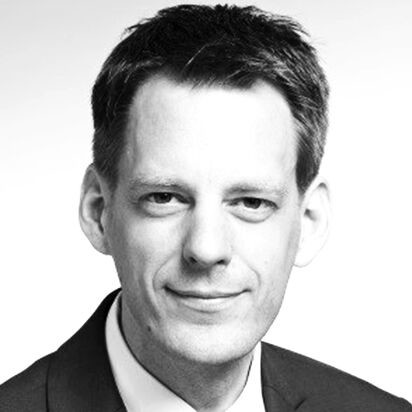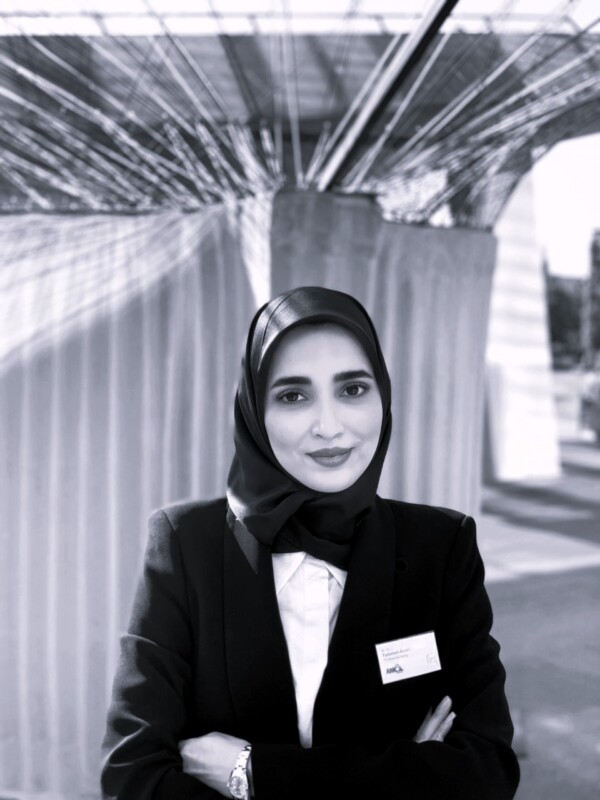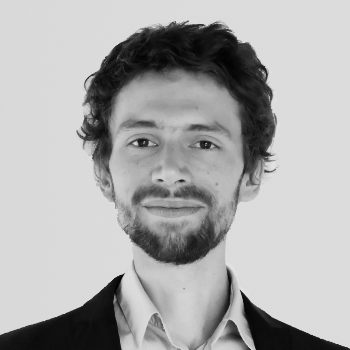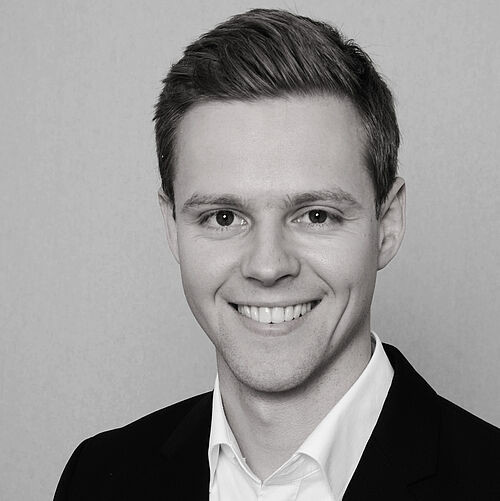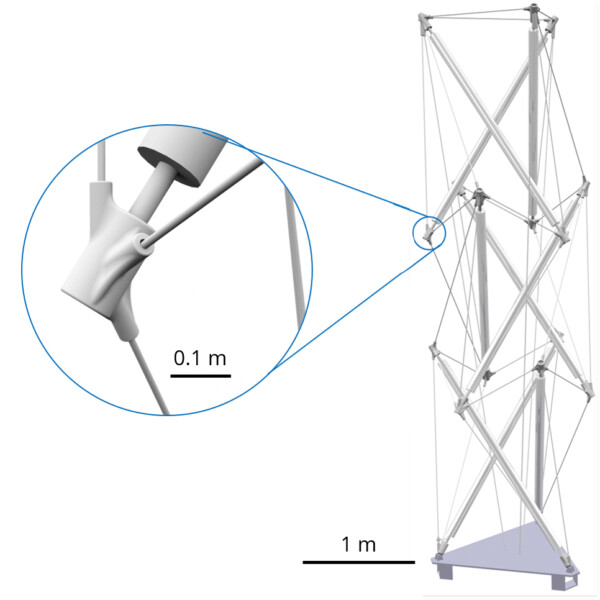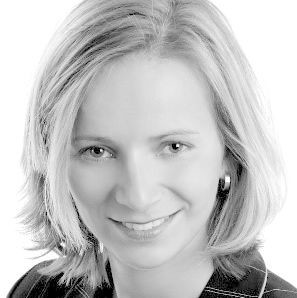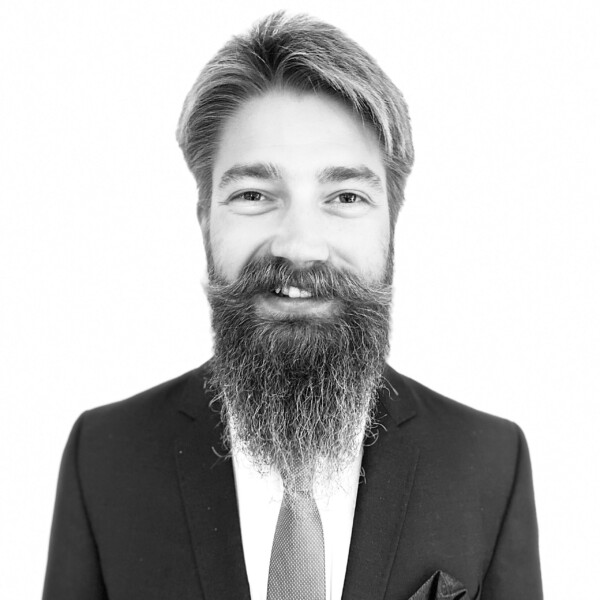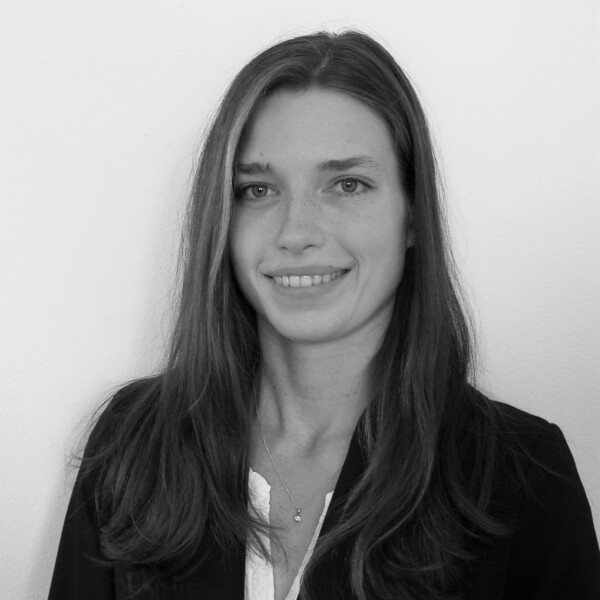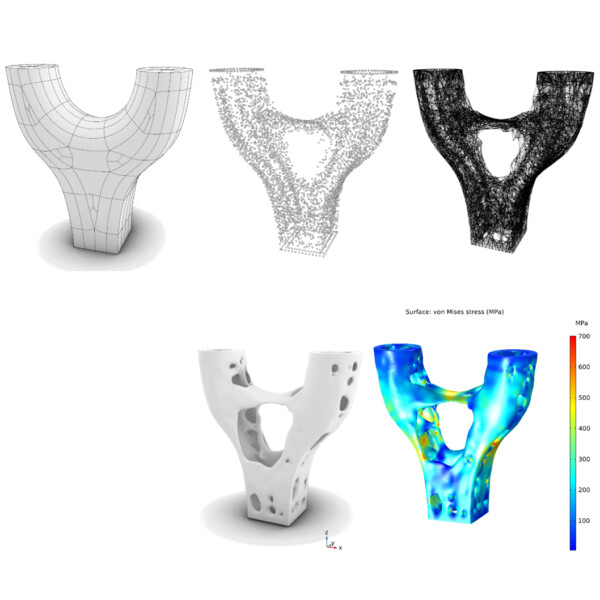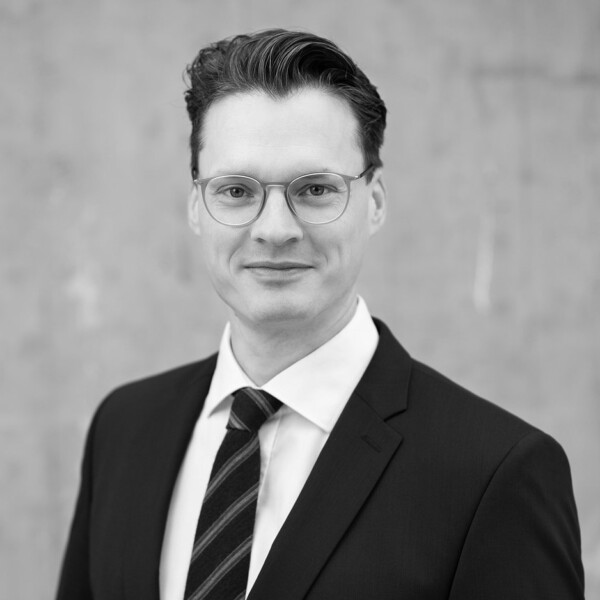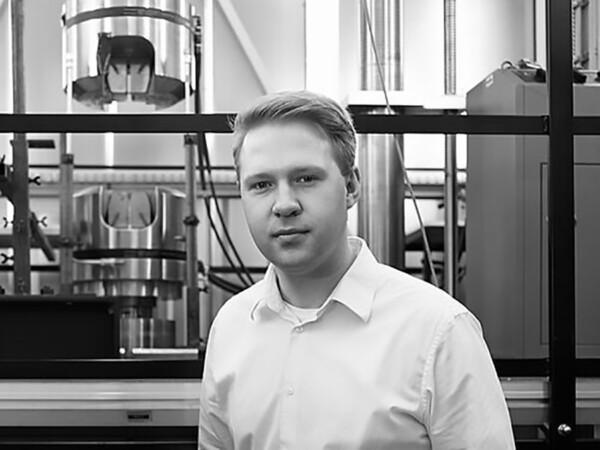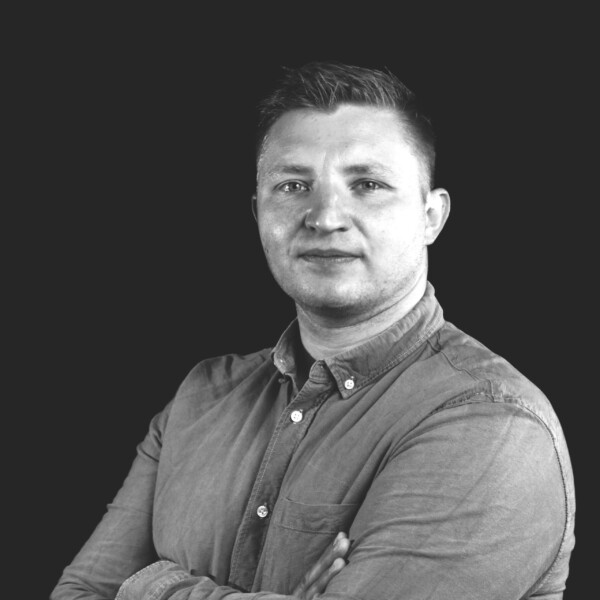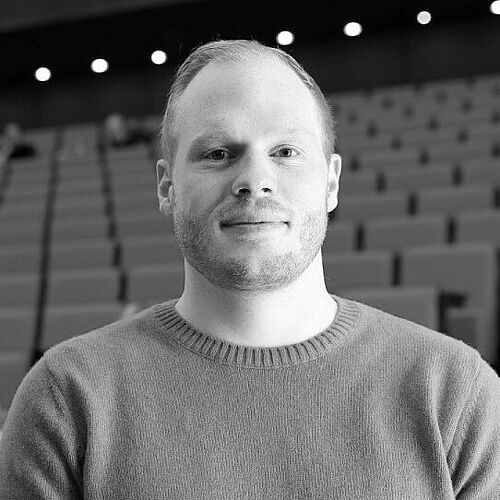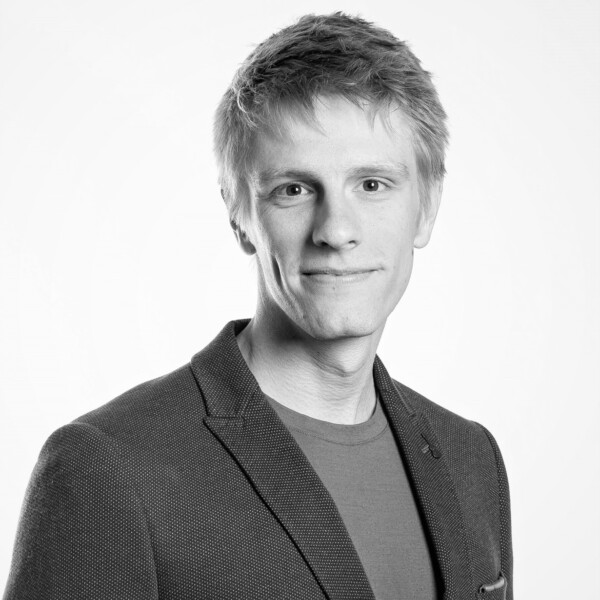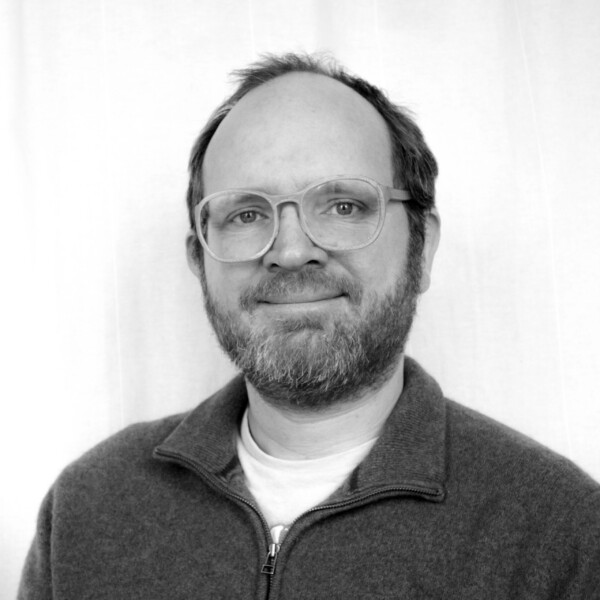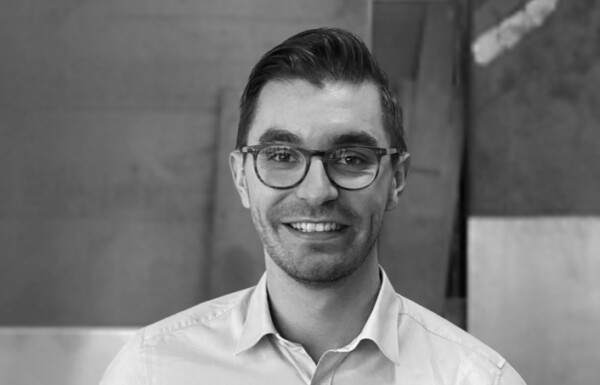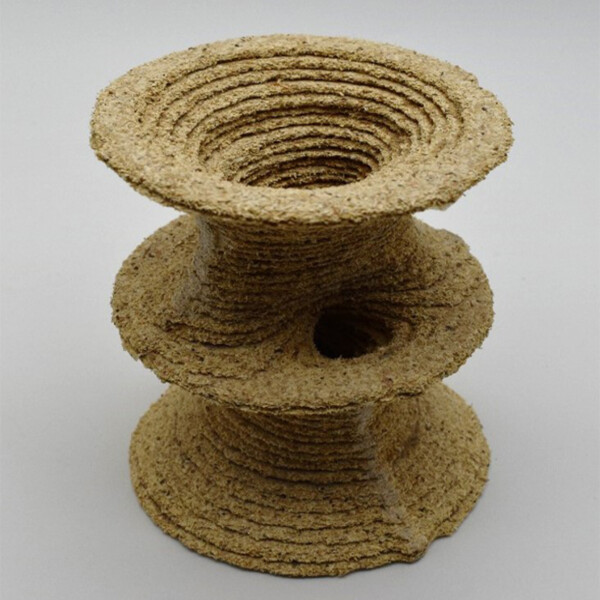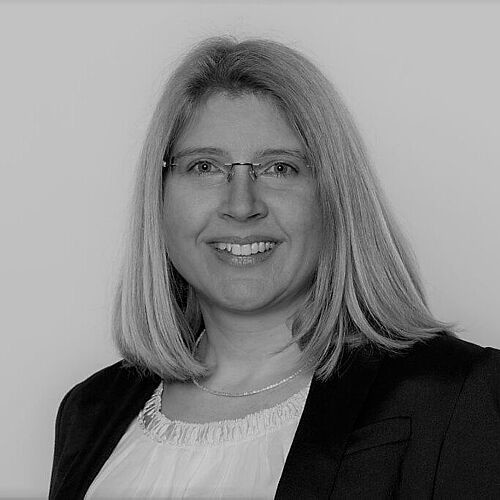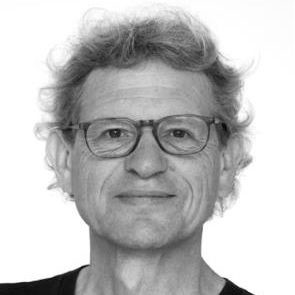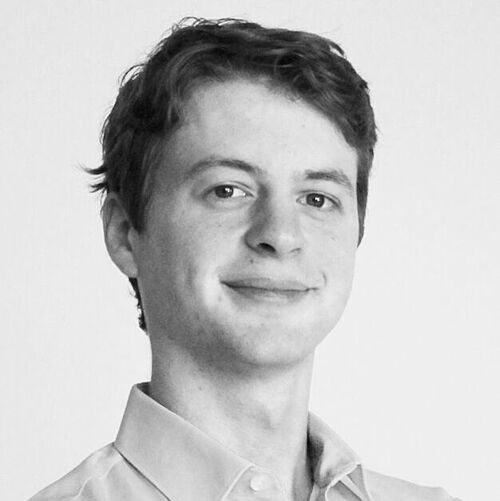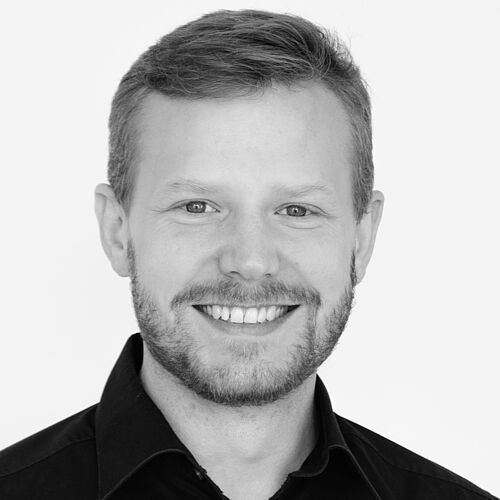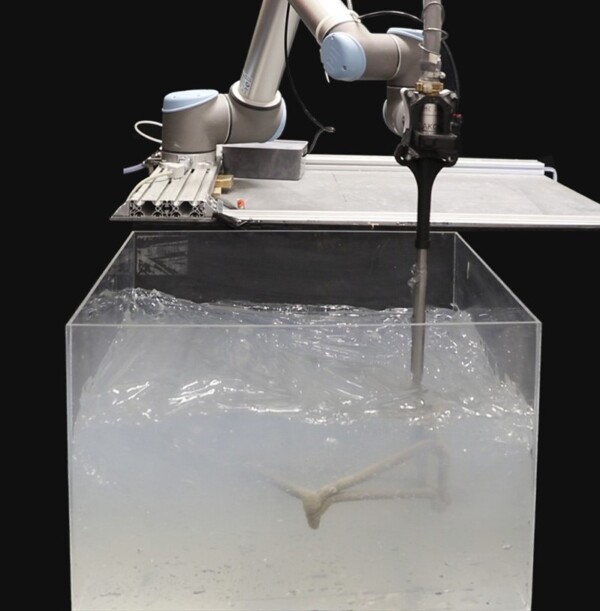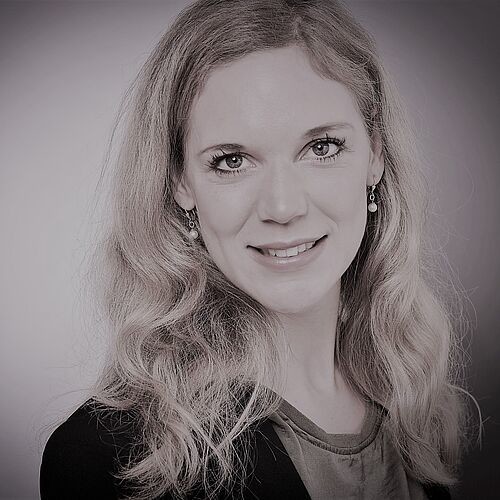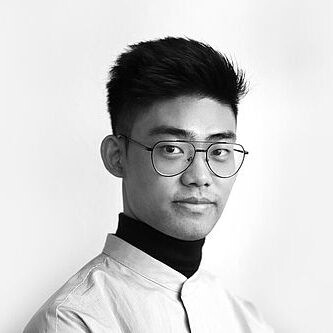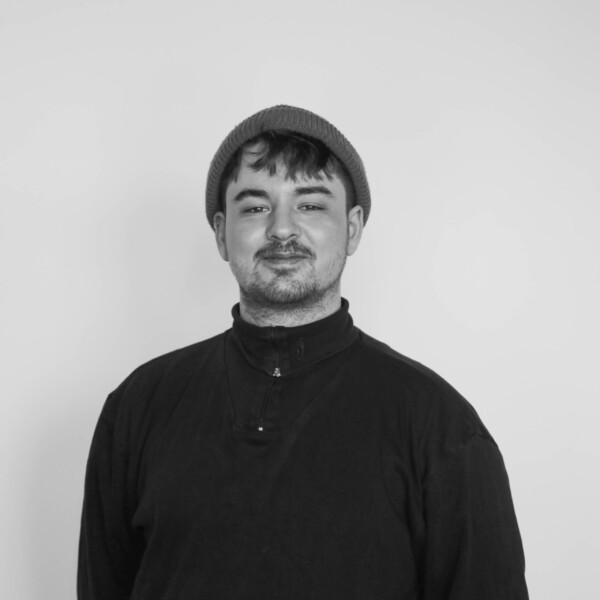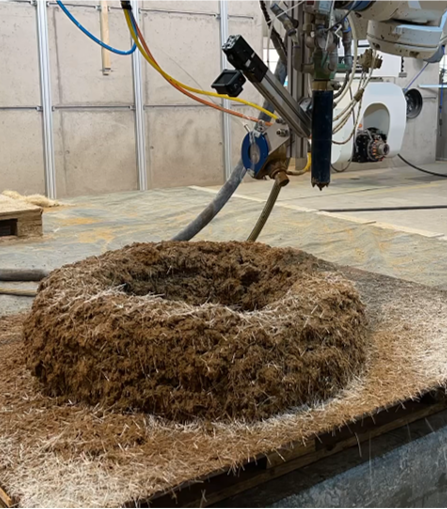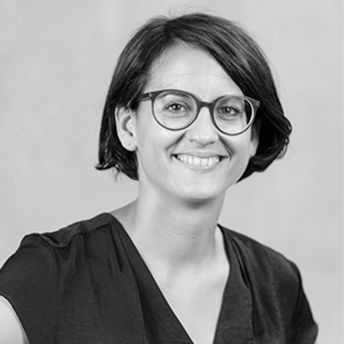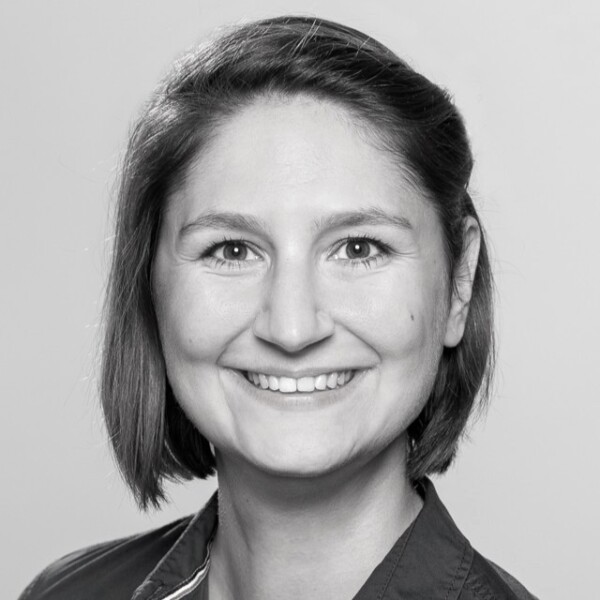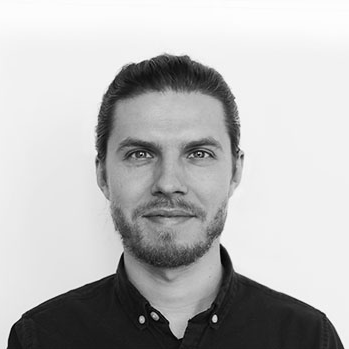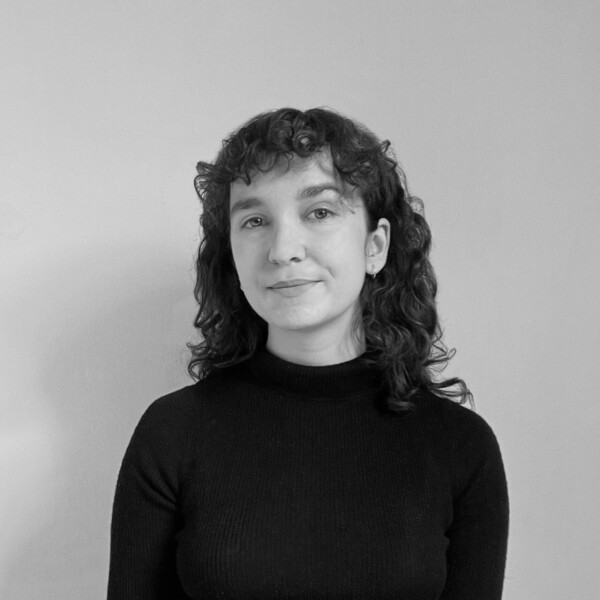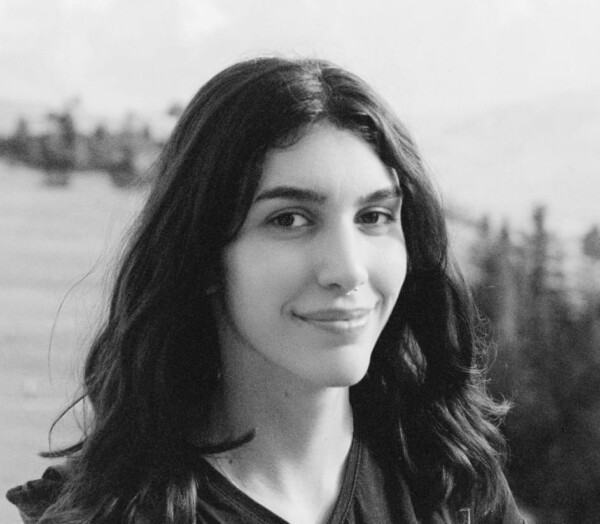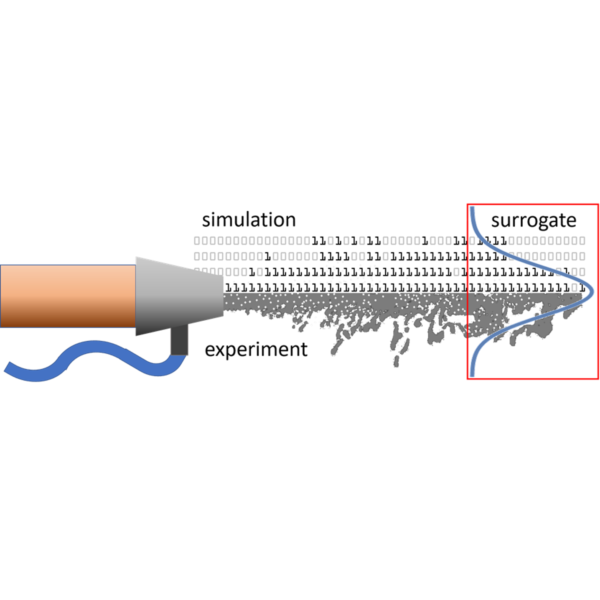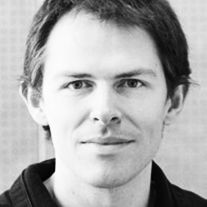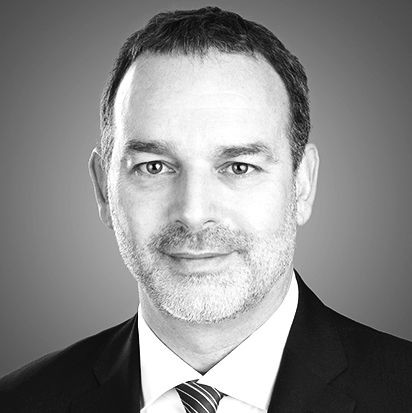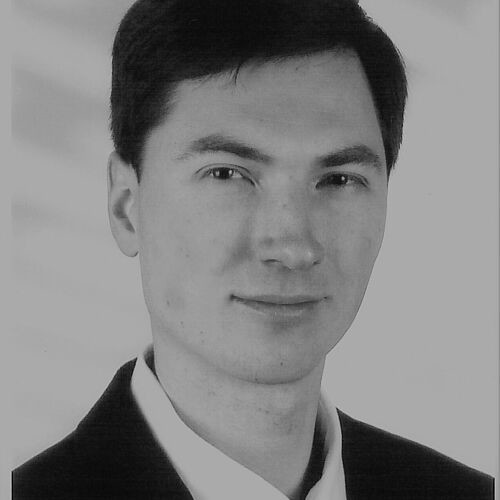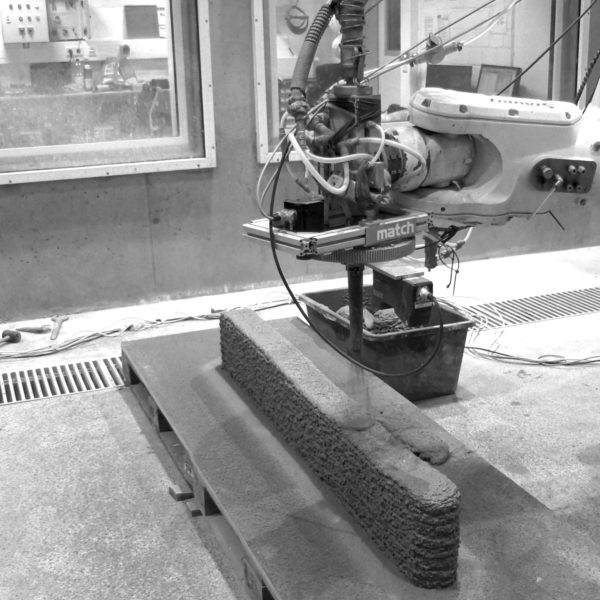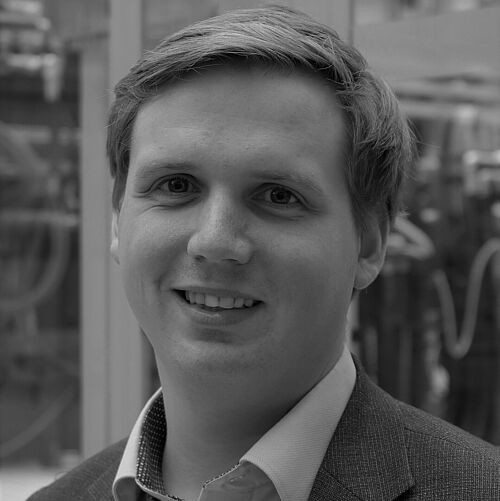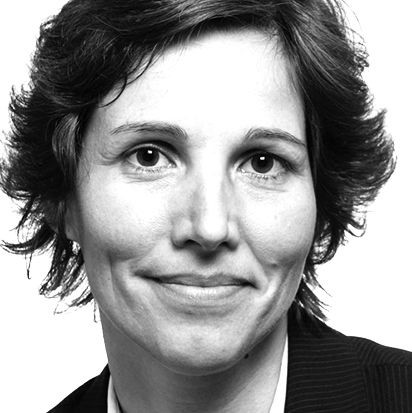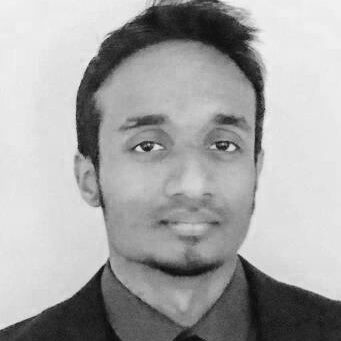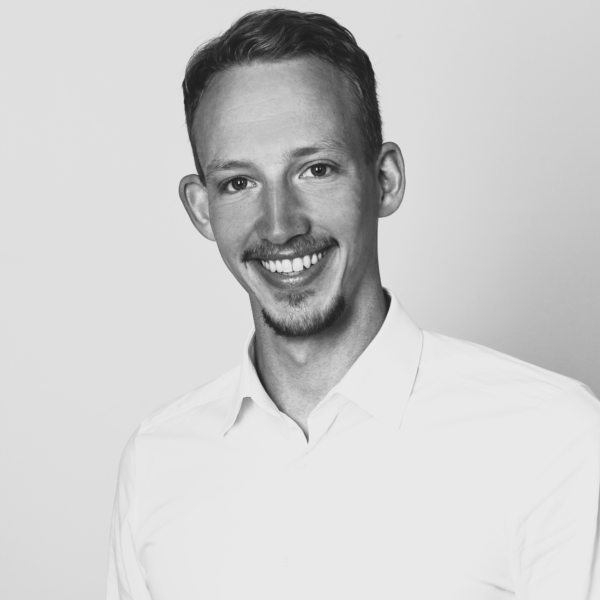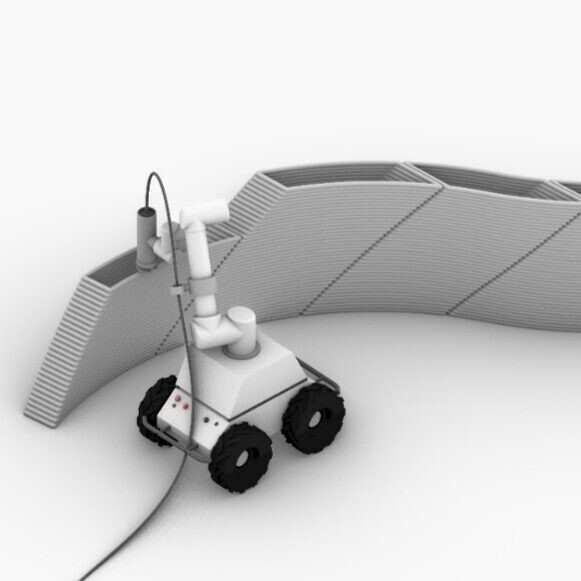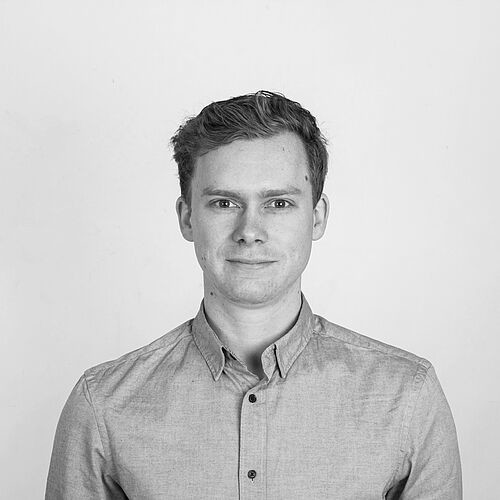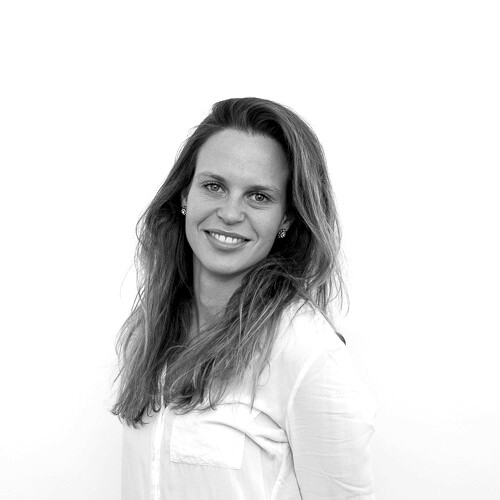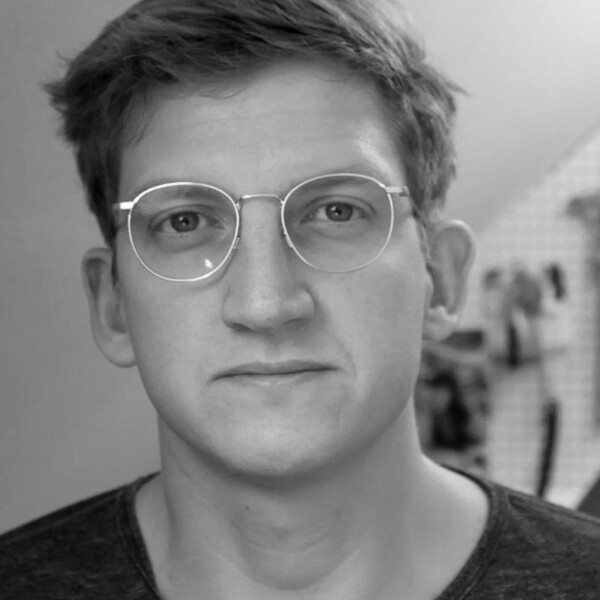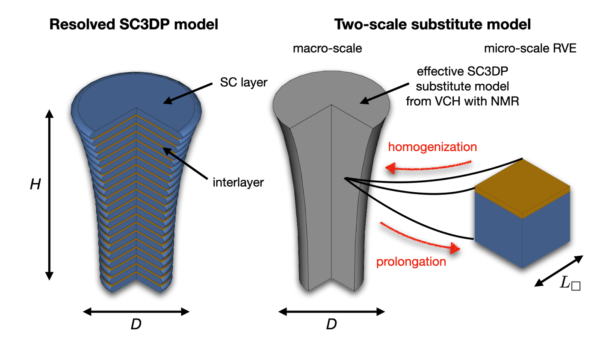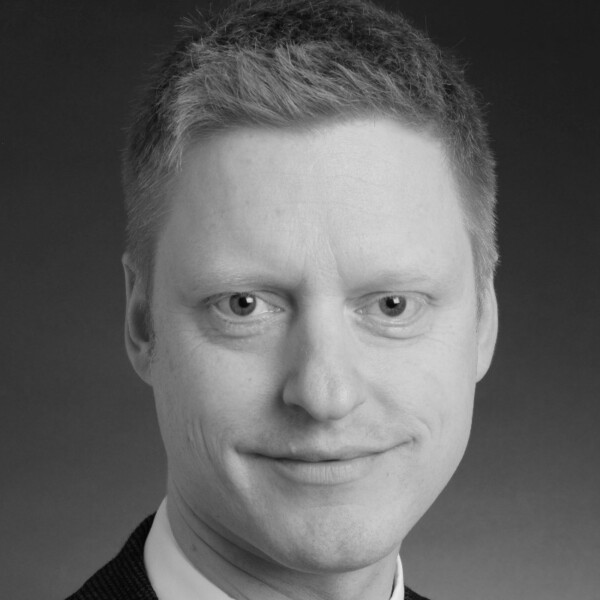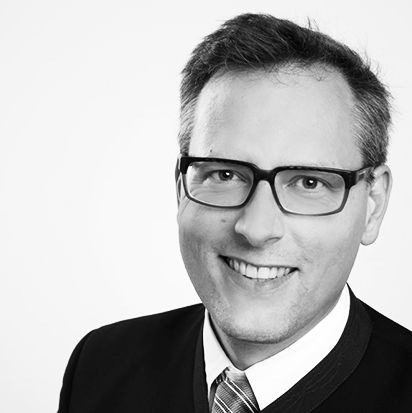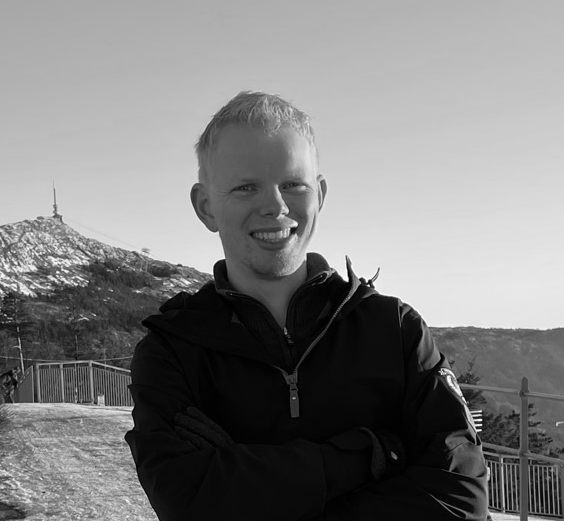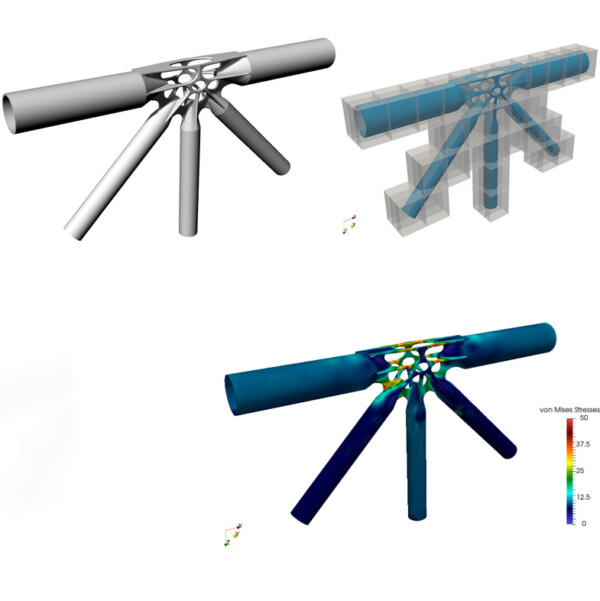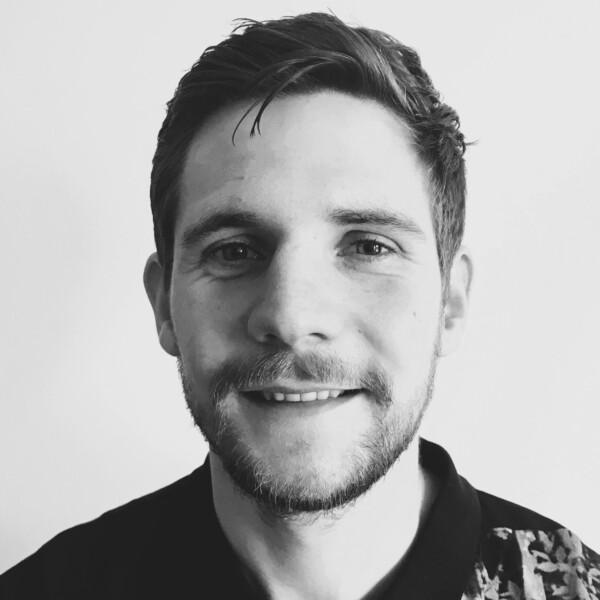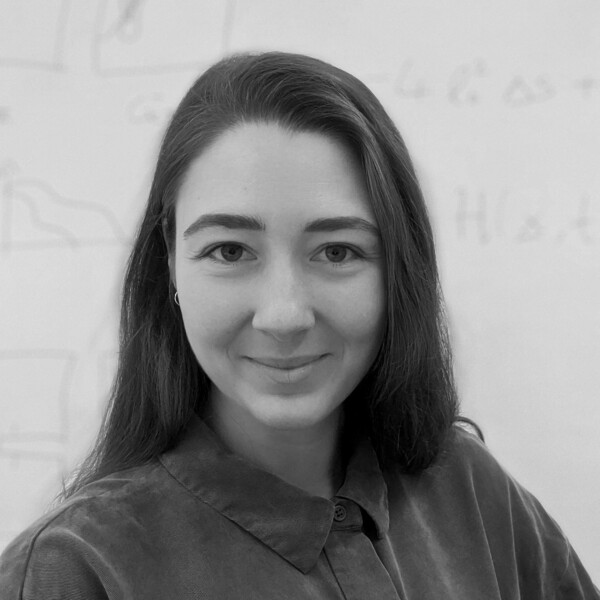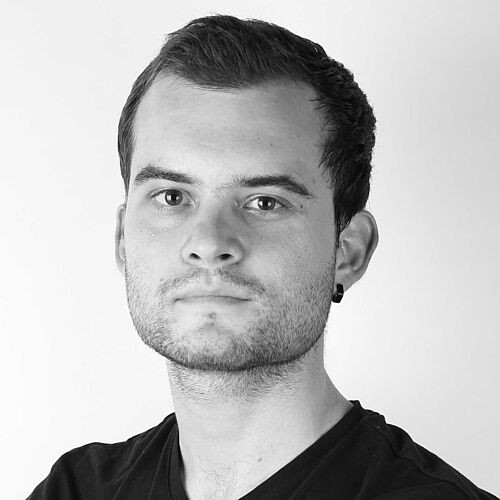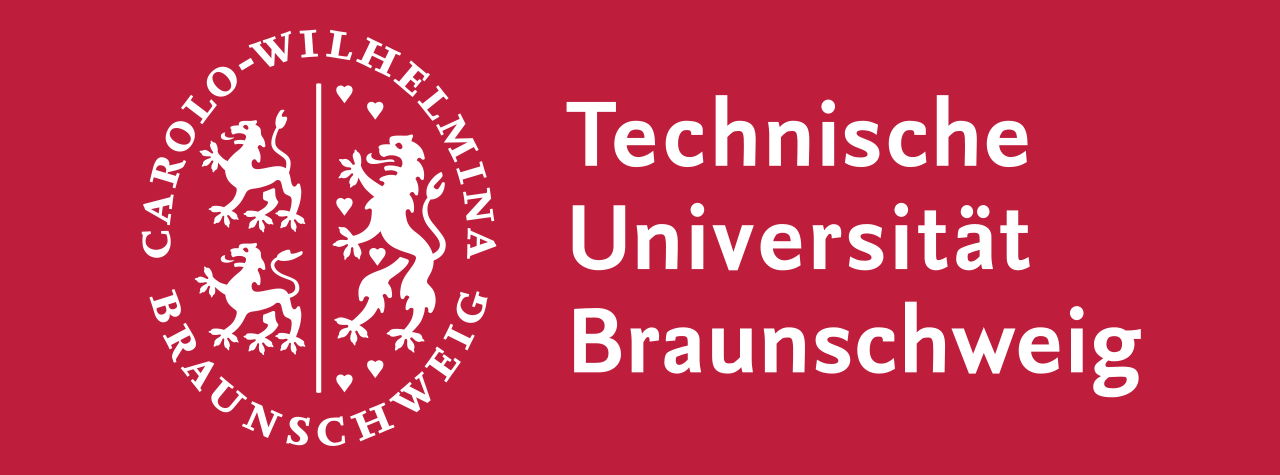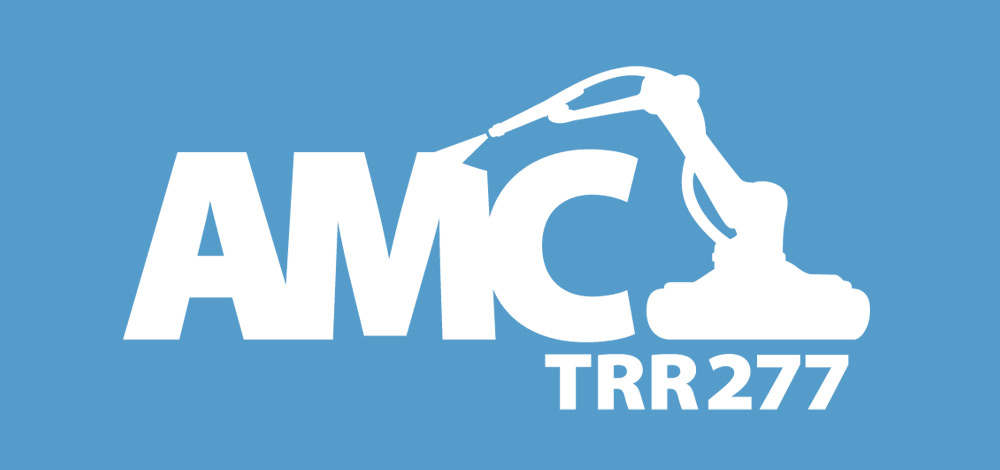Research
Focus area A “Materials and Processes”
Focus area A “Materials and Processes” centres on the investigation of basic principles for the development from scratch of unique AMC processes for concrete, steel, and timber. As mentioned above, the innovation potential of the proposal is based primarily on the merging of material and process developments produced in interdisciplinary research teams.
Show More
Based on the state of research and the results of preliminary research projects carried out by the applicants, two groups of additive manufacturing technologies are considered promising for implementation in construction: (1) particle-bed 3D printing techniques and (2) deposition 3D printing techniques.
Particle-bed 3D printing techniques include selective cement activation (SCA) (A01) and selective paste intrusion (SPI) (A02) for concrete, as well as selective laser melting (SLM) (A06) for steel and individual layer fabrication (A08) for timber. Among the deposition techniques, extrusion 3D printing (A03) and shotcrete 3D printing (SC3DP) (A04) for concrete, as well as wire and arc additive manufacturing (WAAM) (A07) for steel are considered.
Focus Area B “Computational Modelling and Control”
The experimentally driven investigations of focus area A ‘Materials and Processes‘ are enhanced by the corresponding projects of focus area B ‘Computational Modelling and Control’. All AM processes will be developed by taking into account assigned digital feedback obtained by computational modelling and process control.
Show More
The aim of focus area B is the development of novel models and efficient discretisation schemes for numerical simulation of material–process interactions relevant to additive manufacturing processes in construction.
From the modelling point of view, the focus is on the rheological behaviour of concrete during extrusion (B02, B03) and on the thermo-mechanical behaviour of steel during selective laser melting (B01). On the computational side, a suite of discretisation procedures will be developed, including DEM, FEM, and Lattice Boltzmann methods. Additionally, the coupling of multiple discretisation techniques will be required due to the complexity of the described phenomena.
During the first funding period, primarily A projects A03, A04 and A07, for which sufficient information about the material behaviour is available from preliminary research, will be supported with modelling and simulations (B01-B03). In the course of the second funding period, the area of computational modelling will be expanded to all A projects. Furthermore, a special focus will be on process control and path planning for the robot-assisted AM techniques. Therefore, project B04 is tied to the robotic manufacturing methods of projects A04 and A05. Project B 05 is related to project A03. Kathrin Dörfler, freshly appointed professor for Digital Fabrication at TU Munich, will focus on the integration of mobile robots in the extrusion-based AM process of A03 by investigating the principles of mobile robotics for AM and the potential opportunities that these processes can bring to on-site construction.
Focus area C “Design and Construction”
Focus area C “Design and Construction” addresses the most important subjects related to the implementation of additive manufacturing in the process chain of design and construction. The interaction between digital models and physical objects forms the methodical relationship within TRR 277 and connects the focus areas A and C.
Show More
This “digital/real relationship” will be addressed by physical demonstration objects with assigned digital twins (digital/real demonstrators).
This focus area provides feedback to the A projects by investigating novel design techniques and structural optimisation (C01, C02) as well as innovative assembling principles for additively manufactured structural elements (C05).
Project C 03 can be considered as a first attempt to integrate extended functions from the area of technical building equipment, building physics, and energy aspects. This research area will be expanded in the following funding periods.
Any information about building information modelling (BIM) will converge in project C04. The central research question of C04 is the investigation of the seamless digitalization in construction, and especially the clarification of the interface between planning and production. In project C04 the information from all the projects of focus area C meshes. In the second funding period, Christoph Herrmann (TUBS / IWF) will join the project to extend the BIM models with controlled material flow models in order to carry out ecological assessments.
The effects associated with the implementation of innovative AM processes in the construction industry will be addressed (C06). In this context, the feedback with respect to element configuration and dimensions of the additively manufactured large-scale structural elements, and the fact that constructions are always immovable, are of central importance. The questions of whether a higher degree of prefabrication due to AMC is a suitable goal or whether in-situ production will keep being of major importance in construction will be addressed in this project.
Finally, future job profiles for skilled workers as well as technical regulations in the area of AMC will be investigated in project C07. This is important for creating the prerequisites for this new technology to be accepted in the construction industry. AMC creates new job opportunities with significantly higher skill levels than traditional construction jobs. Moreover, for the application of additive manufacturing processes in construction practice, the development of adapted technical standards is of essential importance.
Approach Visuals Figure 2: 3D printing of prismatic specimens for bending tensile and compressive strength / Credit: Dreßler, iBMB TU Braunschweig Figure 3: De-powdering of a printed column / Credit:…
Project leaders
Prof. Dr.-Ing. Arno Kwade
Head of the institute for particle technology. Head of iPAT and supports the academic staff regarding the conditioning of particle products.
Project(s)
Particle-Bed 3D Printing by Selective Cement Activation (SCA) – Sustainability, process enhancement and material models
Particle-Bed 3D Printing by Selective Cement Paste Intrusion (SPI) – Particle Surface Functionalisation, Particle Synthesis and Integration of WAAM Reinforcement
Prof. Dr.-Ing. Dirk Lowke
is head of the institute of building materials, concrete construction and fire protection, division of building materials. He will advise the scientific staff executing their work under consideration of the formulated project aims. He is responsible for the coordination and quality control of all work of iBMB.
Project(s)
Particle-Bed 3D Printing by Selective Cement Activation (SCA) – Sustainability, process enhancement and material models
Integrated Additive Manufacturing Processes for Reinforced Shotcrete 3D Printing (SC3DP) Elements with Precise Surface Quality
Contributors
M. Sc. Evelien Dorresteijn
is a researcher at Institute of Building Materials, Concrete Construction and Fire Safety and works for the project A01.
Project(s)
Particle-Bed 3D Printing by Selective Cement Activation (SCA) – Sustainability, process enhancement and material models
M. Sc. Friedrich Herding
M. Sc. Friedrich Herding is a research associate in the working group of Prof. Dr.-Ing. Dirk Lowke. He is researching the material-process interaction in the SCA process.
Project(s)
Particle-Bed 3D Printing by Selective Cement Activation (SCA) – Sustainability, process enhancement and material models
M. Sc. Niklas Meier
is a research associate in the work group of Prof. Dr.-Ing. Arno Kwade. He is responsible for the development of tailored particles for the SCA process.
Project(s)
Particle-Bed 3D Printing by Selective Cement Activation (SCA) – Sustainability, process enhancement and material models
Dr.-Ing. Harald Zetzener
deputy director of the institute for particle technology, head of Division Powder and Slurry Processes, supports Prof. Kwade in leading the project.
Project(s)
Particle-Bed 3D Printing by Selective Cement Activation (SCA) – Sustainability, process enhancement and material models
Particle-Bed 3D Printing by Selective Cement Paste Intrusion (SPI) – Particle Surface Functionalisation, Particle Synthesis and Integration of WAAM Reinforcement
Figure 1: Production cycle of SPI with WAAM reinforcement: I) application of the WAAM reinforcement, II) spreading of the next aggregate layer, III) intrusion of the cement paste in the target layer,…
Project leaders
Prof. Dr.-Ing .Christoph Gehlen
Dean of TUM School of Engineering and Design, Head of cbm and leads project A02 and A03. He instructs and advises the academic staff regarding additive manufacturing and concrete technological questions. He is responsible for the coordination and quality control of all work of cbm. Untill Oct. 2021 he was the co-spokesperson of the TRR 277. He then became Dean of TUM School of Engineering and Design and handed over the tasks of Co-Speaker to Kathrin Dörfler.
Project(s)
Particle-Bed 3D Printing by Selective Cement Paste Intrusion (SPI) – Particle Surface Functionalisation, Particle Synthesis and Integration of WAAM Reinforcement
Extrusion of Near-Nozzle Mixed Concrete –Individually Graded in Density and in Rate of 3D Fibre Reinforcement
Prof. Dr.-Ing. Arno Kwade
Head of the institute for particle technology. Head of iPAT and supports the academic staff regarding the conditioning of particle products.
Project(s)
Particle-Bed 3D Printing by Selective Cement Activation (SCA) – Sustainability, process enhancement and material models
Particle-Bed 3D Printing by Selective Cement Paste Intrusion (SPI) – Particle Surface Functionalisation, Particle Synthesis and Integration of WAAM Reinforcement
Prof. Dr.-Ing. Michael F. Zäh
guides the scientific staff in the execution of the LPBF experiments.He provides guidance in methods for analysing the main mechanisms of action and the correlation of the results for the whole process chain. Head of iwb and supports the academic staff regarding additive manufacturing, alignment and execution of numerical heat transport simulations, questions during validation and process development.
Project(s)
Particle-Bed 3D Printing by Selective Cement Paste Intrusion (SPI) – Particle Surface Functionalisation, Particle Synthesis and Integration of WAAM Reinforcement
Laser Powder-Bed Fusion (LPBF) of Steel Elements for Construction – Basics of Design and Mechanical Resilience.
Contributors
M. Sc. Siegfried Bähr
Siegfried Baehr is head of the department Additive Manufacturing at the iwb and assists Prof. Zaeh in leading the projects A02 and A06. He is instructing and supporting the academic staff regarding LPBF and WAAM.
Project(s)
Particle-Bed 3D Printing by Selective Cement Paste Intrusion (SPI) – Particle Surface Functionalisation, Particle Synthesis and Integration of WAAM Reinforcement
Laser Powder-Bed Fusion (LPBF) of Steel Elements for Construction – Basics of Design and Mechanical Resilience.
M. Sc. Leigh Duncan Hamilton
is a research associate in the work group of Prof. Dr.-Ing. Arno Kwade. He is responsible for the development of tailored particles for the combined process of SPI and WAAM.
Project(s)
Particle-Bed 3D Printing by Selective Cement Paste Intrusion (SPI) – Particle Surface Functionalisation, Particle Synthesis and Integration of WAAM Reinforcement
Dr.-Ing. Thomas Kränkel
Head of workgroup concrete technology and assists Prof. Gehlen in leading project A02. He instructs and supports the academic staff regarding additive manufacturing and concrete technological questions.
Project(s)
Particle-Bed 3D Printing by Selective Cement Paste Intrusion (SPI) – Particle Surface Functionalisation, Particle Synthesis and Integration of WAAM Reinforcement
Extrusion of Near-Nozzle Mixed Concrete –Individually Graded in Density and in Rate of 3D Fibre Reinforcement
M. Sc. Felix Riegger
is a research associate in the workgroup of Prof. Dr.-Ing. Michael F. Zäh. As an expert in WAAM, he is responsible for the simulation and temperature modelling of the process.
Project(s)
Particle-Bed 3D Printing by Selective Cement Paste Intrusion (SPI) – Particle Surface Functionalisation, Particle Synthesis and Integration of WAAM Reinforcement
M. Sc. Alexander Straßer
is a research associate at the Workinggroup of Prof. Dr.-Ing. Christoph Gehlen. Responsible for research on selective paste intrusion and development of cement pastes.
Project(s)
Particle-Bed 3D Printing by Selective Cement Paste Intrusion (SPI) – Particle Surface Functionalisation, Particle Synthesis and Integration of WAAM Reinforcement
Dr.-Ing. Harald Zetzener
deputy director of the institute for particle technology, head of Division Powder and Slurry Processes, supports Prof. Kwade in leading the project.
Project(s)
Particle-Bed 3D Printing by Selective Cement Activation (SCA) – Sustainability, process enhancement and material models
Particle-Bed 3D Printing by Selective Cement Paste Intrusion (SPI) – Particle Surface Functionalisation, Particle Synthesis and Integration of WAAM Reinforcement
Networking with other projects Extrusion of Near-Nozzle Mixed Concrete –Individually Graded in Density and in Rate of 3D Fibre Reinforcement The gradation of material properties in concrete extrusion…
Project leaders
PhD M.Sc. Freek Bos
Team Leader for Extrusion-Based Additive Manufacturing of Concrete at the TUM School of Engineering and Design
Project(s)
Extrusion of Near-Nozzle Mixed Concrete –Individually Graded in Density and in Rate of 3D Fibre Reinforcement
Prof. Dr.-Ing. Johannes Fottner
Project leader in A03 and B02. He instructs and supports the academic staff regarding bulk conveying and machine design questions.
Project(s)
Extrusion of Near-Nozzle Mixed Concrete –Individually Graded in Density and in Rate of 3D Fibre Reinforcement
Prof. Dr.-Ing .Christoph Gehlen
Dean of TUM School of Engineering and Design, Head of cbm and leads project A02 and A03. He instructs and advises the academic staff regarding additive manufacturing and concrete technological questions. He is responsible for the coordination and quality control of all work of cbm. Untill Oct. 2021 he was the co-spokesperson of the TRR 277. He then became Dean of TUM School of Engineering and Design and handed over the tasks of Co-Speaker to Kathrin Dörfler.
Project(s)
Particle-Bed 3D Printing by Selective Cement Paste Intrusion (SPI) – Particle Surface Functionalisation, Particle Synthesis and Integration of WAAM Reinforcement
Extrusion of Near-Nozzle Mixed Concrete –Individually Graded in Density and in Rate of 3D Fibre Reinforcement
Contributors
M. Sc. Maximilian Dahlenburg
is an expert in mechanical engineering, specialized in development, CAD-Design and construction of complex machines at the Chair of Materials Handling, Material Flow, Logistics within TUM. He is responsible for design, construction, automation, simulation and optimization of the near-nozzle continuous mixing system developed in A03. Furthermore he is responsible for the material supply and the mat…
Project(s)
Extrusion of Near-Nozzle Mixed Concrete –Individually Graded in Density and in Rate of 3D Fibre Reinforcement
M. Sc. Maximilian Hechtl
is a research associate at the Working group of Prof. Dr.-Ing. Christoph Gehlen. Expert in material development of Extrusion Concrete for additive manufacturing.
Project(s)
Extrusion of Near-Nozzle Mixed Concrete –Individually Graded in Density and in Rate of 3D Fibre Reinforcement
Dr.-Ing. Thomas Kränkel
Head of workgroup concrete technology and assists Prof. Gehlen in leading project A02. He instructs and supports the academic staff regarding additive manufacturing and concrete technological questions.
Project(s)
Particle-Bed 3D Printing by Selective Cement Paste Intrusion (SPI) – Particle Surface Functionalisation, Particle Synthesis and Integration of WAAM Reinforcement
Extrusion of Near-Nozzle Mixed Concrete –Individually Graded in Density and in Rate of 3D Fibre Reinforcement
Networking with other projects Integrated Additive Manufacturing Processes for Reinforced Shotcrete 3D Printing (SC3DP) Elements with Precise Surface Quality Within this project, basic research on var…
Project leaders
Prof. Dr.-Ing. Klaus Dröder
advises the scientific staff in continuous consideration of the defined research objectives and investigates opportunities to generate novel research projects and publications. He is responsible for the content and organisational coordination of all work on the part of IWF.
Project(s)
Integrated Additive Manufacturing Processes for Reinforced Shotcrete 3D Printing (SC3DP) Elements with Precise Surface Quality
Prof. Dr.-Ing. Harald Kloft
leads the scientific staff in the orientation and execution of the design process creation and supports them in an advisory capacity in the creation of test geometries and demonstrators. He is responsible for the content and organisational coordination of all work on the part of ITE. He instructs the research engineer at ITE in the conceptual structure, execution and evaluation of the theoretical and experimental research work. He is the spokesperson of the TRR 277.
Project(s)
Integrated Additive Manufacturing Processes for Reinforced Shotcrete 3D Printing (SC3DP) Elements with Precise Surface Quality
Wire and Arc Additive Manufacturing (WAAM) of Complex Individualized Steel Components
Earth Additive Manufacturing (EAM) – Material and Process Combinations for AM with Earth-based Materials
Jointing Principles for Combination of Concrete Elements Produced by Different Additive Manufacturing Processes
Central Tasks of the AMC
Prof. Dr.-Ing. Dirk Lowke
is head of the institute of building materials, concrete construction and fire protection, division of building materials. He will advise the scientific staff executing their work under consideration of the formulated project aims. He is responsible for the coordination and quality control of all work of iBMB.
Project(s)
Particle-Bed 3D Printing by Selective Cement Activation (SCA) – Sustainability, process enhancement and material models
Integrated Additive Manufacturing Processes for Reinforced Shotcrete 3D Printing (SC3DP) Elements with Precise Surface Quality
Contributors
Dr.-Ing. Abtin Baghdadi
is a research associate at Institute of Structural Design (ITE) of TU Braunschweig. He is responsible for experimental, theoretical and numerical research work as well as for the coordination of the cooperations within the SFB.
Project(s)
Integrated Additive Manufacturing Processes for Reinforced Shotcrete 3D Printing (SC3DP) Elements with Precise Surface Quality
Jointing Principles for Combination of Concrete Elements Produced by Different Additive Manufacturing Processes
M. Sc. David Böhler
Project(s) Project A 04 Integrated Additive Manufacturing Processes for Reinforced Shotcrete 3D Printing (SC3DP) Elements with Precise Surface Quality
Project(s)
Integrated Additive Manufacturing Processes for Reinforced Shotcrete 3D Printing (SC3DP) Elements with Precise Surface Quality
M. Sc. Martin David
is a doctoral researcher at the Institute for Machine Tools and Production Technology (IWF) at TU Braunschweig. He is working on the development of different end effectors for an automated concrete reinforcement as well as the surface processing of printed SC3DP elements. Additionally he is developing different nozzle geometries for the SC3DP process. Moreover, he will frequently publish the resul…
Project(s)
Integrated Additive Manufacturing Processes for Reinforced Shotcrete 3D Printing (SC3DP) Elements with Precise Surface Quality
M. Sc. Robin Dörrie
is a doctoral researcher for the duration of the research project. He is leading the A04 project and organising the development of new concepts and strategies for the integration of reinforcement in SC3DP elements. Furthermore he is investigating the SC3DP process, its limitations and the spatial effect for the application in architecture and design within the work group of Prof. Dr.-Ing. Harald K…
Project(s)
Integrated Additive Manufacturing Processes for Reinforced Shotcrete 3D Printing (SC3DP) Elements with Precise Surface Quality
M. Sc. Niklas Freund
is a doctoral researcher for the duration of the research project. He will lead and organise the material development and testing program as well as the data evaluation and material modelling work within WG Lowke. Moreover, he will frequently publish the results achieved within the community.
Project(s)
Integrated Additive Manufacturing Processes for Reinforced Shotcrete 3D Printing (SC3DP) Elements with Precise Surface Quality
M. Sc. Anna Marie Opolka
is a doctoral researcher at the Institute for Machine Tools and Production Technology (IWF) at TU Braunschweig. She is specialized in robotic manufacturing processes, especially for additive manufacturing and supports the development for the processing of printed SC3DP elements within project A04.
Project(s)
Integrated Additive Manufacturing Processes for Reinforced Shotcrete 3D Printing (SC3DP) Elements with Precise Surface Quality
Jennifer Rudolph
is a researcher at project A04.
Project(s)
Integrated Additive Manufacturing Processes for Reinforced Shotcrete 3D Printing (SC3DP) Elements with Precise Surface Quality
Half-covered real-scale case study for the combination of Core Winding Reinforcement and Shotcrete 3D Printing. The reinforcement layout was derived from principle stress analysis (overlay on the left…
Project leaders
Dipl.-Ing. M.A. AA Norman Hack
is supervising ITE`s requested doctoral researcher during all phases of the research. Additionally, he is actively involved in the conceptual phase, developing reinforcement concepts for the different AM methods.
Project(s)
Integration of Individualized Prefabricated Fibre Reinforcement in Additive Manufacturing with Concrete
Injection 3D Concrete Printing (I3DCP) – Material Efficient Lightweight Reinforced Concrete Structures Based on Spatially Complex Strut-and-Tie-Models
Integration of Additive Manufacturing in the Construction Process
Prof. Dr.-Ing. Christian Hühne
leads the iAF scientific staff in the development and construction of the winding head, the manufacturing process of the reinforcement from FRP with different curing resins, and in questions of the damage of the FRP by the shotcreting process.
Project(s)
Integration of Individualized Prefabricated Fibre Reinforcement in Additive Manufacturing with Concrete
Contributors
M. Sc. Fatemeh Amiri
Her focus centers on the exploration of innovative fiber reinforcement strategies, reflecting her role as a dedicated doctoral researcher.
Project(s)
Integration of Individualized Prefabricated Fibre Reinforcement in Additive Manufacturing with Concrete
M. Sc. Stefan Gantner
investigates fibre reinforcement strategies as doctoral researcher. In collaboration with project partners he develops techniques for processing fibres to obtain suitable reinforcement structures for different AM methods. Beyond conception his work scope ranges from deriving representative part designs to physical testing including prototyping of toolings.
Project(s)
Integration of Individualized Prefabricated Fibre Reinforcement in Additive Manufacturing with Concrete
M. Sc. Tom Rothe
is investigating the usability of prefabricated fibre reinforcement produced in a robotic winding process for different AM methods. He’s developing an automated production process of the fibre reinforcement for the special needs of the project. This includes the investigation of the most suitable reinforcement geometry, the build-up of a dynamic winding machine and the integration of it into a rob…
Project(s)
Integration of Individualized Prefabricated Fibre Reinforcement in Additive Manufacturing with Concrete
Shape-optimized tensegrity node manufactured by PBF-LB/M (vibratory ground and polished) Shape-optimized tensegrity node manufactured by PBF-LB/M (as-built with support structure) Typical microstructu…
Project leaders
Dr.-Ing. Christina Radlbeck
leads scientific teams for AM, fatigue and fracture and aluminium at MB and is responsible for the MB Laboratory. She supervises experiments and provides assistance in analysis and interpre- tation of results
Project(s)
Laser Powder-Bed Fusion (LPBF) of Steel Elements for Construction – Basics of Design and Mechanical Resilience.
Prof. Dr.-Ing. Michael F. Zäh
guides the scientific staff in the execution of the LPBF experiments.He provides guidance in methods for analysing the main mechanisms of action and the correlation of the results for the whole process chain. Head of iwb and supports the academic staff regarding additive manufacturing, alignment and execution of numerical heat transport simulations, questions during validation and process development.
Project(s)
Particle-Bed 3D Printing by Selective Cement Paste Intrusion (SPI) – Particle Surface Functionalisation, Particle Synthesis and Integration of WAAM Reinforcement
Laser Powder-Bed Fusion (LPBF) of Steel Elements for Construction – Basics of Design and Mechanical Resilience.
Contributors
M. Sc. Siegfried Bähr
Siegfried Baehr is head of the department Additive Manufacturing at the iwb and assists Prof. Zaeh in leading the projects A02 and A06. He is instructing and supporting the academic staff regarding LPBF and WAAM.
Project(s)
Particle-Bed 3D Printing by Selective Cement Paste Intrusion (SPI) – Particle Surface Functionalisation, Particle Synthesis and Integration of WAAM Reinforcement
Laser Powder-Bed Fusion (LPBF) of Steel Elements for Construction – Basics of Design and Mechanical Resilience.
M. Sc. Jakob Blankenhagen
is a doctoral researcher: Conducts scientific studies for the duration of the research project. Performs mechanical testing, fatigue testing, fracture mechanics testing, metallurgical analysis, and investigates the influence of geometry on structural performance. Analyzes all data and prepares reports, presentations, and publications.
Project(s)
Laser Powder-Bed Fusion (LPBF) of Steel Elements for Construction – Basics of Design and Mechanical Resilience.
M. Sc. Dorina Siebert
Doctoral researcher: carrying out scientific studies. She will play a decisive role in planning and conducting fatigue and fracture testing. The evaluation and interpretation of test results is also one of her tasks. Finally she undertakes statistical considerations, which are intended to serve as a basis for the development of design guidelines.”
Project(s)
Laser Powder-Bed Fusion (LPBF) of Steel Elements for Construction – Basics of Design and Mechanical Resilience.
M. Sc. David L. Wenzler
Doctoral researcher: for the duration of the research project carrying out the scientific studies. He will execute the LPBF experiments, the thermographic imaging of the LPBF process, data analysis, methods for correlations and listing of guidelines for AM elements.
Project(s)
Laser Powder-Bed Fusion (LPBF) of Steel Elements for Construction – Basics of Design and Mechanical Resilience.
Node with minimum wall thickness and restricted overhang as constraints for topology optimisation using self-organising systems Anchorage structure produced by WAAM Thin-walled structure with one-side…
Project leaders
Uni.-Prof. Dr.-Ing. Jonas Hensel
is Professor for Welding Engineering at Chemnitz University of Technology and takes responsibility for the management of this project in terms of content and organisation as well as the cooperation with project partners within the TRR 277. Furthermore, he supervises the research assistant of WG Hensel for welding experiments, metallographic characterisation, numerical analysis and residual stress determination.
Project(s)
Wire and Arc Additive Manufacturing (WAAM) of Complex Individualized Steel Components
Prof. Dr.-Ing. Harald Kloft
leads the scientific staff in the orientation and execution of the design process creation and supports them in an advisory capacity in the creation of test geometries and demonstrators. He is responsible for the content and organisational coordination of all work on the part of ITE. He instructs the research engineer at ITE in the conceptual structure, execution and evaluation of the theoretical and experimental research work. He is the spokesperson of the TRR 277.
Project(s)
Integrated Additive Manufacturing Processes for Reinforced Shotcrete 3D Printing (SC3DP) Elements with Precise Surface Quality
Wire and Arc Additive Manufacturing (WAAM) of Complex Individualized Steel Components
Earth Additive Manufacturing (EAM) – Material and Process Combinations for AM with Earth-based Materials
Jointing Principles for Combination of Concrete Elements Produced by Different Additive Manufacturing Processes
Central Tasks of the AMC
Dr.-Ing. Julian Unglaub
is head of division Material behavior at IS and takes responsibility for management of this project in terms of content and organization. He supervises the research assistants of WG Thiele for novel material and component testing methods based on MultiCam Digital Image Correlation (DIC) and the development of complex material models to describe WAAM-component behavior.
Project(s)
Wire and Arc Additive Manufacturing (WAAM) of Complex Individualized Steel Components
Contributors
Dr. Kevin Höfer
Kevin Hoefer works as a post-doc at the Chair of Welding Technology and is responsible for the department “Materials and Design”. In the project, he supports Prof. Jonas Hensel in the administration and management of A07, in particular in the areas of welding experiments, metallographic characterisation and residual stress determination.
Project(s)
Wire and Arc Additive Manufacturing (WAAM) of Complex Individualized Steel Components
M. Sc. Hendrik Jahns
doctoral researcher at IS. He is responsible for the planning and execution of all scientific work, both numerical and experimental, in the framework of WAAM. This includes material and component testing, material modeling, analysis all data, prepares reports, presentations and publications.
Project(s)
Wire and Arc Additive Manufacturing (WAAM) of Complex Individualized Steel Components
M. Sc. Florian Jurke
is a research associate at the Chair of Welding Engineering at Chemnitz University of Technology. His focus is process analysis of arc-processes. He is particularly concerned with sensor integration and anomaly detection in arc-welding processes and additive manufacturing with wire and arc (DED-Arc).
Project(s)
Wire and Arc Additive Manufacturing (WAAM) of Complex Individualized Steel Components
M. Sc. Lukas Ledderose
is a postdoctoral researcher at the ITE. He is responsible for design strategies and possible applications. This includes the development of new structures, semi-finished parts and the concept for on-site WAAM as well as life cycle analysis and the creation of Digital Twins. He also prepares reports, presentations and publications.
Project(s)
Wire and Arc Additive Manufacturing (WAAM) of Complex Individualized Steel Components
M. Sc. Marc Müggenburg
doctoral researcher at IS. He is responsible for the planning and execution of all scientific work, both numerical and experimental, in the framework of WAAM. This includes material and component testing, material modeling, analysis of all data, preparation of reports, presentations and publications.
Project(s)
Wire and Arc Additive Manufacturing (WAAM) of Complex Individualized Steel Components
Networking with other projects Structural Timber by Individual Layer Fabrication (ILF) In project A08 a novel fabrication process named ‘individual layer fabrication (ILF)’ is being investigated, whic…
Project leaders
Dr. rer. nat. Frauke Bunzel
has been working in the field of wood adhesives for many years. She gives guidance and support to the academic staff at WKI regarding the entire adhesive systems including adhesives, particles and pressing parameters.
Dr.-Ing. Klaudius Henke
has been working on additive manufacturing in construction for many years. This work also includes additive manufacturing with wood. He leads the project A08 and provides general guidance and support for the academic staff at HBB. In addition, he is responsible for the coordination of the proposed project within the TRR 277. He was a member of the AMC Board for the first funding period 2020-2023.
Contributors
M. Sc. Carsten Aßhoff
is research associate at Fraunhofer Institute for Wood Research – Wilhelm-Klauditz-Institut WKI. In his doctoral research the focus is on the material development for additive manufacturing with wood.
M. Sc. Birger Buschmann
is a mechanical engineer and doctoral researcher at TUM-HBB. For the project A08 he will work out the details of the fabrication process and is responsible for the topic of automatization. In C07 his responsibilities include the development of data acquisition concepts in order to identify relevant process parameters as well as the evaluation of generated data in order to form concepts for regulat…
Project(s)
Structural Timber by Individual Layer Fabrication (ILF)
Challenges of Additive Manufacturing – Technical Regulations and Qualification Requirements
M. Sc. Daniel Talke
is a doctoral researcher and expert on additive manufacturing in construction. His previous work includes extrusion as well as selective binding processes of concrete. He will be responsible at TUM-HBB for all the collaborative work to be executed in conjunction with WKI in project A08, especially for WP 2.
Project(s)
Structural Timber by Individual Layer Fabrication (ILF)
Challenges of Additive Manufacturing – Technical Regulations and Qualification Requirements
Networking with other projects Injection 3D Concrete Printing (I3DCP) – Material Efficient Lightweight Reinforced Concrete Structures Based on Spatially Complex Strut-and-Tie-Models Injection 3D Concr…
Project leaders
Dipl.-Ing. M.A. AA Norman Hack
is supervising ITE`s requested doctoral researcher during all phases of the research. Additionally, he is actively involved in the conceptual phase, developing reinforcement concepts for the different AM methods.
Project(s)
Integration of Individualized Prefabricated Fibre Reinforcement in Additive Manufacturing with Concrete
Injection 3D Concrete Printing (I3DCP) – Material Efficient Lightweight Reinforced Concrete Structures Based on Spatially Complex Strut-and-Tie-Models
Integration of Additive Manufacturing in the Construction Process
Dr.-Ing. Inka Mai
is Junior-Professor at the Institute of Civil Engineering, Department of Robotic Manufacturing of the Built Environment at Technische Universität Berlin.
Project(s)
Injection 3D Concrete Printing (I3DCP) – Material Efficient Lightweight Reinforced Concrete Structures Based on Spatially Complex Strut-and-Tie-Models
Contributors
M.Sc. Yinan Xiao
Is a doctoral researcher at the Institute of Structural Design (ITE) at TU Braunschweig.
Project(s)
Injection 3D Concrete Printing (I3DCP) – Material Efficient Lightweight Reinforced Concrete Structures Based on Spatially Complex Strut-and-Tie-Models
M. Sc Jan-Phillip Zöllner
Is a doctoral researcher at the Institute of Structural Design (ITE) at TU Braunschweig. He is working in project A09 developing strategies for Injection Printing. This includes robotic path planing, as well as strategies for reinforcement integration
Project(s)
Injection 3D Concrete Printing (I3DCP) – Material Efficient Lightweight Reinforced Concrete Structures Based on Spatially Complex Strut-and-Tie-Models
Networking with other projects Earth Additive Manufacturing (EAM) – Material and Process Combinations for AM with Earth-based Materials In recent years, research and development of Addit…
Project leaders
Prof. Dr. sc. Kathrin ETH Dörfler
leads the scientific staff in the conception and execution of the research, and in questions of validation of the proposed methods. She is also responsible for the coordination of the cooperating research projects in the TRR 277. She is the Co-Spokesperson of the TRR 277. Dörfler supports Kloft as contact person for the DFG, in general public relation matters and also in representing the TRR 277 externally. Internally, Dörfler assists Kloft in the coordination between the research projects, as well as in the decisions on the financing of research tasks in the TRR 277.
Project(s)
Earth Additive Manufacturing (EAM) – Material and Process Combinations for AM with Earth-based Materials
Principles of Mobile Robotics for Additive Manufacturing in Construction
Learning, Sustainability, Design: Gender-equitable introduction of AMC to the public
Central Tasks of the AMC
Prof. Dr.-Ing. Harald Kloft
leads the scientific staff in the orientation and execution of the design process creation and supports them in an advisory capacity in the creation of test geometries and demonstrators. He is responsible for the content and organisational coordination of all work on the part of ITE. He instructs the research engineer at ITE in the conceptual structure, execution and evaluation of the theoretical and experimental research work. He is the spokesperson of the TRR 277.
Project(s)
Integrated Additive Manufacturing Processes for Reinforced Shotcrete 3D Printing (SC3DP) Elements with Precise Surface Quality
Wire and Arc Additive Manufacturing (WAAM) of Complex Individualized Steel Components
Earth Additive Manufacturing (EAM) – Material and Process Combinations for AM with Earth-based Materials
Jointing Principles for Combination of Concrete Elements Produced by Different Additive Manufacturing Processes
Central Tasks of the AMC
Prof. Dr. (PhD) Alisa Machner
is Professor at School of Engineering and Design, Department of Materials Engineering – Technical University of Munich. In her doctoral research the focus is on dolomite calcined clay composite cement.
Project(s)
Earth Additive Manufacturing (EAM) – Material and Process Combinations for AM with Earth-based Materials
Contributors
M. Sc. Hannes Eichler
is a structural engineer and doctoral researcher at the TUB Institute for Structural Design (ITE). He is responsible for Project A10 where he is researching on Sprayed Earth Additive Manufacturing (SEAM). This includes general investigations on earthen constructions as well as development of the SEAM process and the optimization of material-process interactions. Within the project, he will carry o…
Project(s)
Earth Additive Manufacturing (EAM) – Material and Process Combinations for AM with Earth-based Materials
M.Sc. Joschua Gosslar
Project(s) Project A 10 Earth Additive Manufacturing (EAM) – Material and Process Combinations for AM with Earth-based Materials
Project(s)
Earth Additive Manufacturing (EAM) – Material and Process Combinations for AM with Earth-based Materials
M. Sc. Ema Krakovska
is a researcher at the TT Professorship for Digital Fabrication within TUM. She received her architecture master’s degree at TUM in 2022, focusing on computational methods in architecture. Project(s) Project A 10 Earth Additive Manufacturing (EAM) – Material and Process Combinations for AM with Earth-based Materials
Project(s)
Earth Additive Manufacturing (EAM) – Material and Process Combinations for AM with Earth-based Materials
M. Sc. Sofia Tsiotou
is a doctoral researcher at the TUM Professorship of Mineral Construction Materials with a focus on clays and clay minerals for the purposes of the A10 project.
Project(s)
Earth Additive Manufacturing (EAM) – Material and Process Combinations for AM with Earth-based Materials
Taylor-Couette simulation of Bingham Fluid Phase-field simulation of falling droplet Granular Particle Image velocimetry of jet Phase-field simulation of jet Networking with other projects Modelling a…
Project leaders
Junior Prof. Dr. rer. nat. Martin Geier
will substantially contribute to model development and implementation related aspects of WPs 1-2 and will contribute to the analysis of simulation results with special focus on WP 5.
Project(s)
Modelling and Simulation of Shotcrete 3D Printing (SC3DP) Based on a Massively Parallel Multi-Phase, Multi-Component Coupled LBM-DEM Approach
Prof. Dr.-Ing. Manfred Krafczyk
is responsible for WPs 3-5 and contributes to HPC and setup related aspects of the corresponding simulations. He advises Dr. Kutscher in conducting the simulations and the analysis of the results. He also takes responsibility for the data exchange with other projects within the TRR.
Project(s)
Modelling and Simulation of Shotcrete 3D Printing (SC3DP) Based on a Massively Parallel Multi-Phase, Multi-Component Coupled LBM-DEM Approach
Contributors
Dr.-Ing. Konstantin Kutscher
is the lead developer of the VirtualFluids software. In this function he is indispensable for the project as a new doc. res. could not possibly extend the existing framework (>700,000 lines of code) with the new models to be developed and adapted in WP 1-4. He is also experienced in conducting massively parallel runs on THIER-0 systems and analyzing huge data sets with more than 10 degrees of free…
Project(s)
Modelling and Simulation of Shotcrete 3D Printing (SC3DP) Based on a Massively Parallel Multi-Phase, Multi-Component Coupled LBM-DEM Approach
Project Scope Website Path Planning Sensorization Networking with other projects Process Control and Adaptive Path Planning for Additive Manufacturing Processes Based on Industrial Robots with an Exte…
Project leaders
Dr.-Ing. André Hürkamp
is junior research group leader at the IWF. Together with Prof. Raatz, he is responsible for the proposed project and its coordination within the TRR 277. He will guide the IWF-staff related to the project and decide about research actions in terms of numerical investigations and model reduction.
Project(s)
Process Control and Adaptive Path Planning for Additive Manufacturing Processes Based on Industrial Robots with an Extended Degree of Freedom
Prof. Dr.-Ing. Annika Raatz
as applicant, she will be responsible for the scientific management and coordination of project B04. In addition to supervising the content of the research assistant, she supports the coordination of the work and represents the project internally and externally as head of the institute.
Project(s)
Process Control and Adaptive Path Planning for Additive Manufacturing Processes Based on Industrial Robots with an Extended Degree of Freedom
Contributors
M. Sc. Virama Ekanayaka
is a doctoral researcher at the IWF. He will be developing finite element models to be used in additive manufacturing. He will lead the implementation of mathematical approaches for model order reduction and work on system sensorization. He will frequently publish the results achieved within the community.
Project(s)
Process Control and Adaptive Path Planning for Additive Manufacturing Processes Based on Industrial Robots with an Extended Degree of Freedom
M. Sc. Hauke Heeren
is a doctoral researcher at the Institute for Assembly Technology and Robotics within Leibniz University Hannover. His background in mechatronics and robotics drives his work on mobile robotics. By synergizing elements from computer science, control theory, and mechanical design he enhances robotic autonomy and efficiency to enable print-while-driving
Project(s)
Process Control and Adaptive Path Planning for Additive Manufacturing Processes Based on Industrial Robots with an Extended Degree of Freedom
Figure 1: Mobile part-based AM: Fabrication scenario of a stay-in-place formwork carried out by a mobile robot. Figure 2: Two mobile robotic systems; left system is equipped with clay extrusion setup….
Project leaders
Prof. Dr. sc. Kathrin ETH Dörfler
leads the scientific staff in the conception and execution of the research, and in questions of validation of the proposed methods. She is also responsible for the coordination of the cooperating research projects in the TRR 277. She is the Co-Spokesperson of the TRR 277. Dörfler supports Kloft as contact person for the DFG, in general public relation matters and also in representing the TRR 277 externally. Internally, Dörfler assists Kloft in the coordination between the research projects, as well as in the decisions on the financing of research tasks in the TRR 277.
Project(s)
Earth Additive Manufacturing (EAM) – Material and Process Combinations for AM with Earth-based Materials
Principles of Mobile Robotics for Additive Manufacturing in Construction
Learning, Sustainability, Design: Gender-equitable introduction of AMC to the public
Central Tasks of the AMC
Contributors
M. Sc. Gido Dielemans
is a doctoral researcher at the TT Professorship for Digital Fabrication within TUM. With background in structural design and engineering, he will develop strategies for using mobile robotic systems performing extrusion-based AM on construction sites. Fundamentally, this work is interdisciplinary, and he therefore strives for a high degree of collaboration within, but not limited to, the TRR277.
Project(s)
Principles of Mobile Robotics for Additive Manufacturing in Construction
Central Tasks of the AMC
Dipl. Ing. Julia Fleckenstein
is a doctoral researcher at the TT Professorship for Digital Fabrication at TUM with background in architecture. In her research, she explores site-specific digital design tools for robotically fabricated real-size mono-component building envelopes. As part of her association with the AMC, she is part of the interdisciplinary teaching team for the project “From Additive Manufacturing to Architectu…
M. Sc. David Richter
David is a civil engineer with a passion for soft- and hardware development, digital manufacturing, and prototyping. He obtained his master’s degree in civil engineering from the Technical University of Munich (TUM), with a thesis focused on the investigation of printed carbon short fibre concrete under cyclic tensile stress. Prior to that, David studied philosophy and completed his bachelor’s deg…
Networking with other projects Material Modelling and Simulation of Deposition AM Processes on the Part Scale This project aims at providing a modelling and simulation approach across the scales start…
Project leaders
Prof. Dr.-Ing. Ralf Jänicke
is Professor at the Institute of Applied Mechanics (IAM) –Technical University of Braunschweig . In his habilitation the focus is on computational homogenization and reduced order modelling of diffusion processes in fluid-saturated porous media.
Project(s)
Material Modelling and Simulation of Deposition AM Processes on the Part Scale
PD. Dr.-Ing. habil. Stefan Kollmannsberger
is Professor at Bauhaus-University Weimar and is Head of the Chair of Data Science in Civil Engineering. He was head of the work group ‘Simulation in Applied Mechanics’ at the Chair of Computational Modeling and Simulation and has a fifteen year-long scientific record in that field. In this project, he is responsible for the development of simulation methods for metal based artefacts.
Project(s)
Material Modelling and Simulation of Deposition AM Processes on the Part Scale
Bridging Scales – From Geometric Part Details to Construction Elements
Contributors
Dr. Knut Andreas Meyer
is a post-doctoral researcher at the Institute of Applied Mechanics (TU Braunschweig). He is working in the intersection of Computational and Experimental Mechanics, dealing with, e.g., nonlinear, history-dependent materials as well as poromechanics.
Project(s)
Material Modelling and Simulation of Deposition AM Processes on the Part Scale
Networking with other projects Bridging Scales – From Geometric Part Details to Construction Elements Digital models for AM involve many different geometric scales. These scales start from micrometres…
Project leaders
PD. Dr.-Ing. habil. Stefan Kollmannsberger
is Professor at Bauhaus-University Weimar and is Head of the Chair of Data Science in Civil Engineering. He was head of the work group ‘Simulation in Applied Mechanics’ at the Chair of Computational Modeling and Simulation and has a fifteen year-long scientific record in that field. In this project, he is responsible for the development of simulation methods for metal based artefacts.
Project(s)
Material Modelling and Simulation of Deposition AM Processes on the Part Scale
Bridging Scales – From Geometric Part Details to Construction Elements
Contributors
M. Sc. Tim Bürchner
Tim Bürchner is a doctoral researcher at the Chair of Computational Modeling and Simulation at the TUM. In his research, he develops efficient, highly accurate and parallelizable methods for computational mechanics. For this purpose, workflows are designed to integrate geometric models of complex AM parts directly into the simulation of building scale models.
M. Sc. Lisa Hug
is a doctoral researcher at the Chair for Computational Modeling and Simulation at TUM. Her research focuses on developing numerical methods to predict the failure behavior of structures. Specifically, she works on the Finite Cell Method, an embedded domain method that allows the simulation of complex geometries. An important aspect is the integration in high-performance settings to facilitate the…
M. Sc. Oguz Oztoprak
Oguz Oztoprak is a doctoral researcher at the Chair of Data Science in Civil Engineering at Bauhaus-University Weimar. He conducts research on geometric modelling and simulation of AM parts. More specificaly, he develops efficient and effective mechanical simulation workflows to integrate complex AM parts into building scale models.
- 1
- 2

